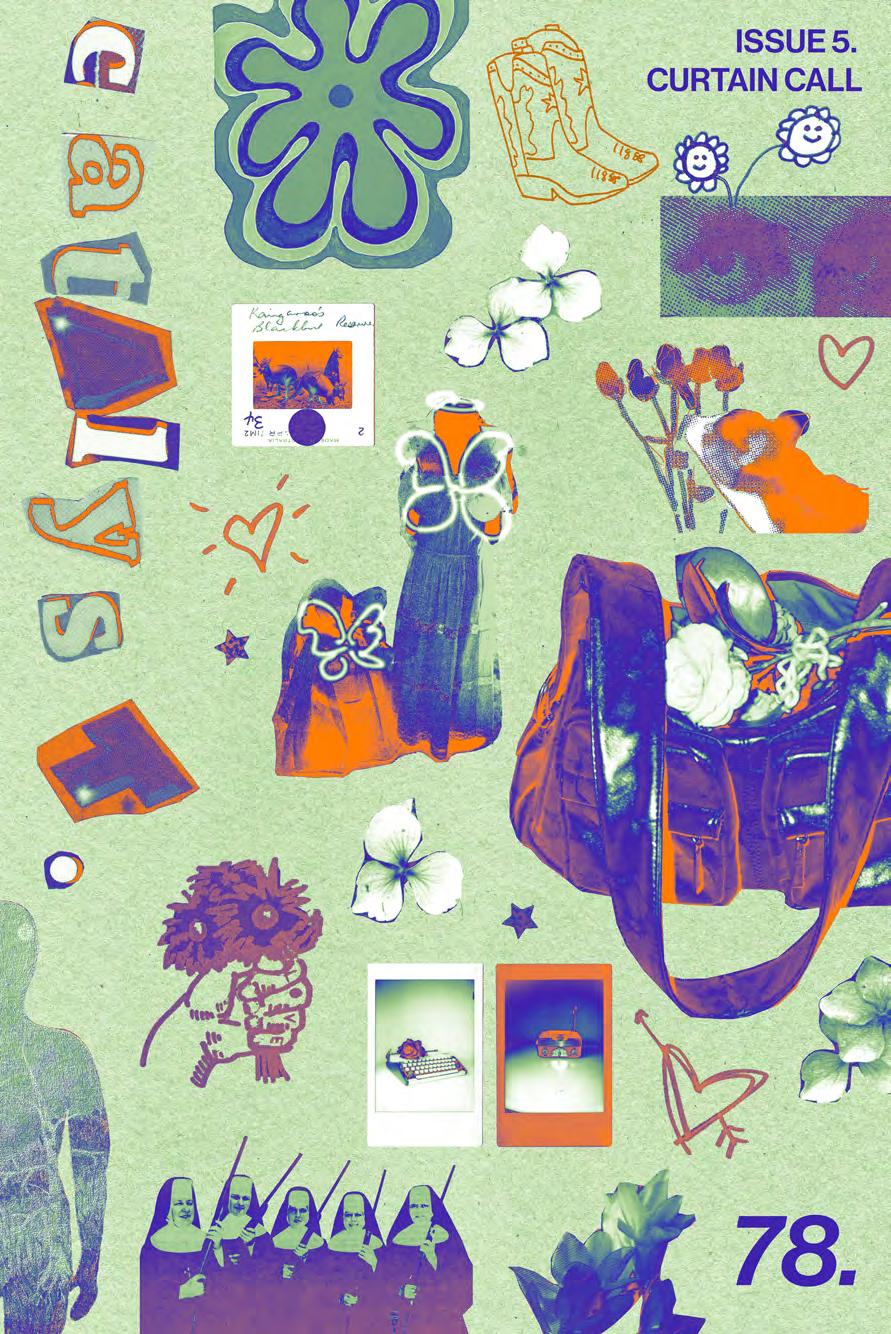
You know that realisation when something – a moment, a relationship, a chapter – has come to an end? That strange, exploratory energy in the air, when you know something won’t be as it once was? It could be the moment the lights turn on at the end of a concert; when a friendship broke up; when you decided to change directions; the last time you stepped foot in a place or saw a certain person. The ending, the finale. The ceasing of something.
For the last issue of 2022, we welcome you to indulge in the toosoon goodbye, what you wish you could’ve said, how far you have come and where you’ve got to go. It’s vast yet vague. You have written, created, photographed whatever these words have translated to you.
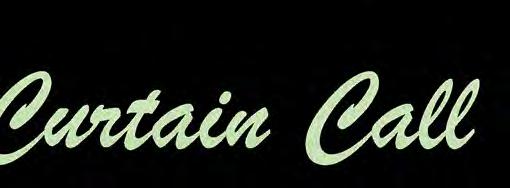


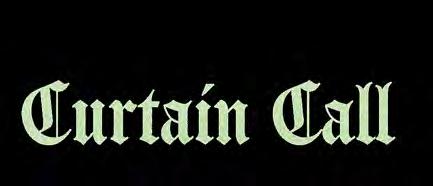
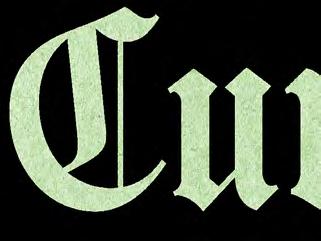

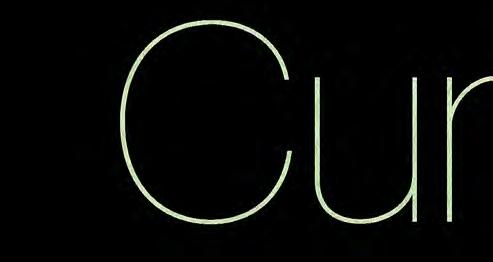

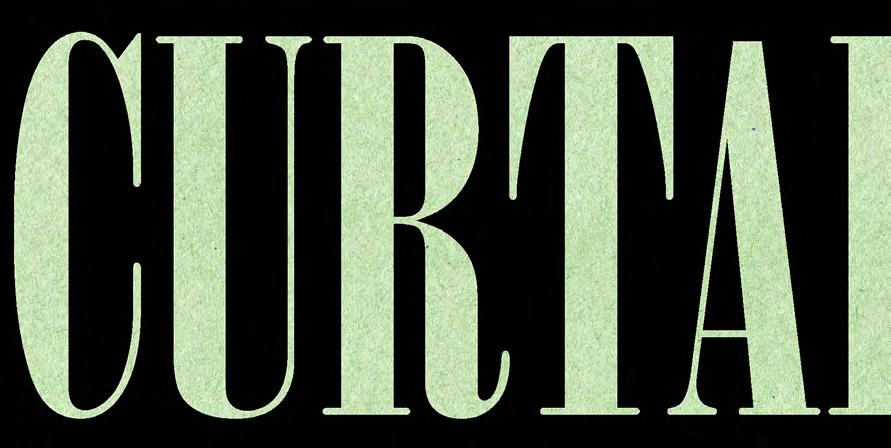
It’s time for your Curtain Call...
from the Editors
Not a




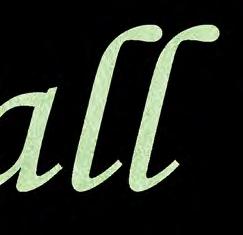

will we do next?
the credits
Year in Hell: How I Ruined Football with Kung Fu Panda
From 100 Years of Grandeur: The history of RMIT’s best facility
(Or the Unstoppable Pizzaz of Baz, Plus the Story of Elvis Presley)
CALL IN ERINSBOROUGH

Kita
Fall
Poppins, Music Boxes and Muchness
Open the lace curtain, grandma
Calling it Curtains
as well
to my

self.
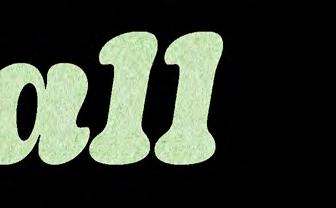
78. ISSUE 5.CONTENTS. 22 A Shadow,
Storm Cloud 23 GREEN MEANS GO 25 Comment on Endings 27 [sad] poetry on unsaid things 29 Sins 33 Deadly Design Sins 35 Liberated X Bookshop 37 Kita Jaga
41 Let Them
42 Might
43 A goodbye
younger
45 2022 Catalyst signage page (Goodbye) 01 Letter
03 What
05 Roll
07 A
11
13 Elvis
15 LAST
17 Mary
20
21
Contributions.
Editors: Beatrice Madamba Savannah Selimi Vivian Dobbie-Glazier
Media Collective,
City Campus, Building 12, Level 3, Room 97
Pty Ltd 14 Hardner Road, Mount Waverley, Victoria 3149 Australia

Photographers: Erina Hoque Shriya Sudarsan Rao Jonah Epstein
Designers: Brianna Simonsen Cherry Lin Vivian Dobbie-Glazier

News Officers: Mia Gregor Rafael Gerster Entertainment Officers: Sienna Taylor-Gibson Ruby Box Olivia Hough Ruby Edwards
Culture Officers: Stella Thomson Nishtha Sharma
Editorial Committee: Jasper Riley Juliette Salom Stella Thomson Mia Gregor Sienna Taylor-Gibson Julianna Perkosz Jean Wenjing Zhang Claudia Weiskopf Rafael Gerster Daniel Car Ruby Edwards Zoe Perks Alyssa Forato India Curtain Jonah Epstein

Creative Writing Officers: Juliette Salom Claudia Weiskopf Julianna Perkosz Zoe Perks
Catalyst and RMIT University Student Union acknowledge the people of the Woi wurrung and Boon wurrung language groups of the eastern Kulin Nations on whose unceded lands we conduct the business of the University. RMIT University respectfully acknowledges their Ancestors and Elders, past, present and future.
Catalyst and RMIT University Student Union also acknowledge the Traditional Custodians and their ancestors of the lands and waters across Australia where it contacts its business.
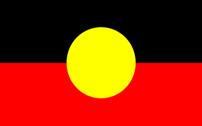
Catalyst Issue 5 2022 Established in 1944 Contact catalyst@rmit.edu.au RMIT
RMIT
Printer Printgraphics



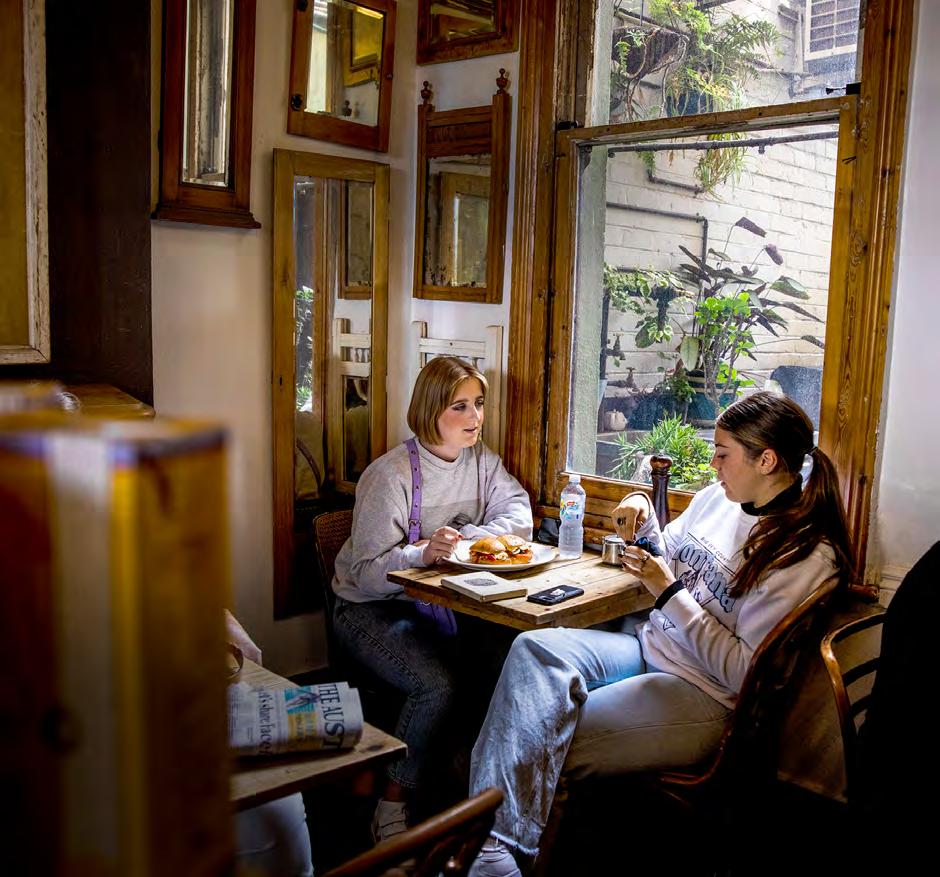
• Coffee shops & eateries • Live music & entertainment venues • Professional & health services • Supplies & groceries @sydneyroadbrunswick sydneyroad.com.au A unique and affordable shopping strip, just around the corner from the Brunswick campus. Melbourne CBD commuters can catch the Upfield train from the city, the No.19 tram or use the Upfield Bike Path.
‘Revitalise’ has been the word of the year for us editors. Bea, Jasper and I wanted to revitalise Catalyst into a space that was vibrant, colourful and explorative, a cross between a zine and a forum for students to feel seen, heard and loved. Now with our last issue of 2022 in your hands, I’m more than proud of what Bea, Jasper, Viv, Bree, Cherry and I have led to create.
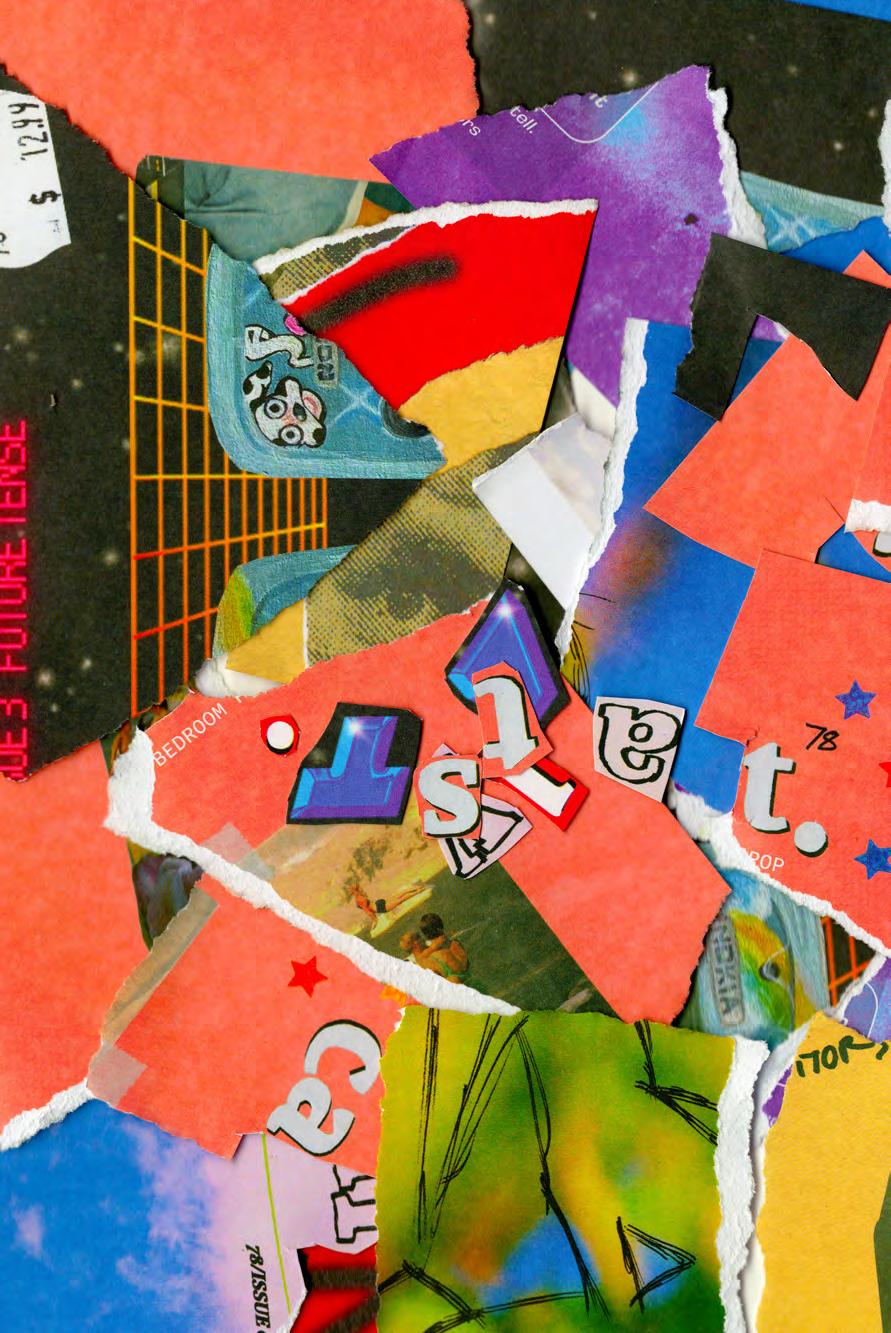
We didn’t anticipate it, but Catalyst became a spectacle for the personal essay this year. The magazine has become a universe of friendship, love, heartbreak, home and identity, and I feel so grateful every time I read the words of a student whose trusted their heart with us and our readers.
I want to deeply thank everyone who contributed to the magazine this year: writing articles, creating artwork, having a drink with us at launch events and picking up a copy on campus. I’m forever inspired by the grit and creativity of youth.
Catalyst will forever be revitalising itself, and I know 2023 will be a good one.
I’m infinitely grateful to have been part of this era.
With love, Sav
Us editors began our journey with a little stall at o-week, presenting to you our very first issue that we had held so close to our hearts. And now, as I write this for our fifth and final issue of the year, I am in bitter-sweet awe of how far the entire team has come.
Volume 78 has been an amazing one. ‘Bedroom pop’ celebrated your roots; the ‘Cult Edition’ championed subculture with pride; ‘Future Tense’ forced us to face the ephemerality of life; ‘Every Where’ moved us to bask in our surroundings. And now we present to you ‘Curtain Call’, a space of hope to reflect on what once was, but also what will follow.
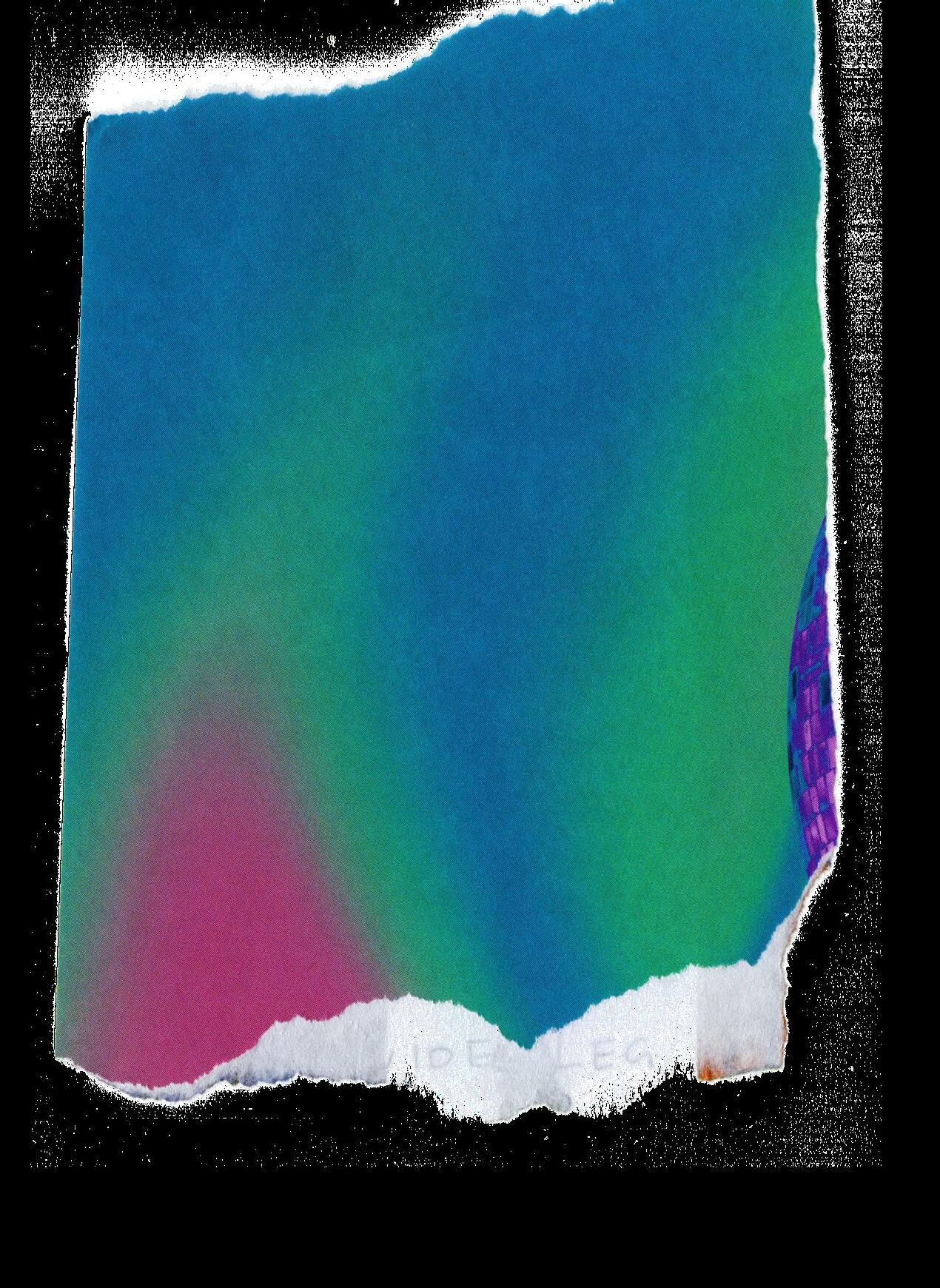
With each issue, our contributors have written with their entire heart and soul – and it shows. These 52 pages (208 in total) have become a safe space for all students to unleash their creativity in more ways than one. Time and time again, I have been enamored by your thoughts, your words, your angst and your art. And I am beyond proud of what we have created together.
So, I sign off now with immense pride and infinite gratitude for what has been the most memorable and rewarding year. Here’s to Volume 78, 79 – and many more to come.
With love, Bea

CURTAIN CALL c.1
Letter from the Editors
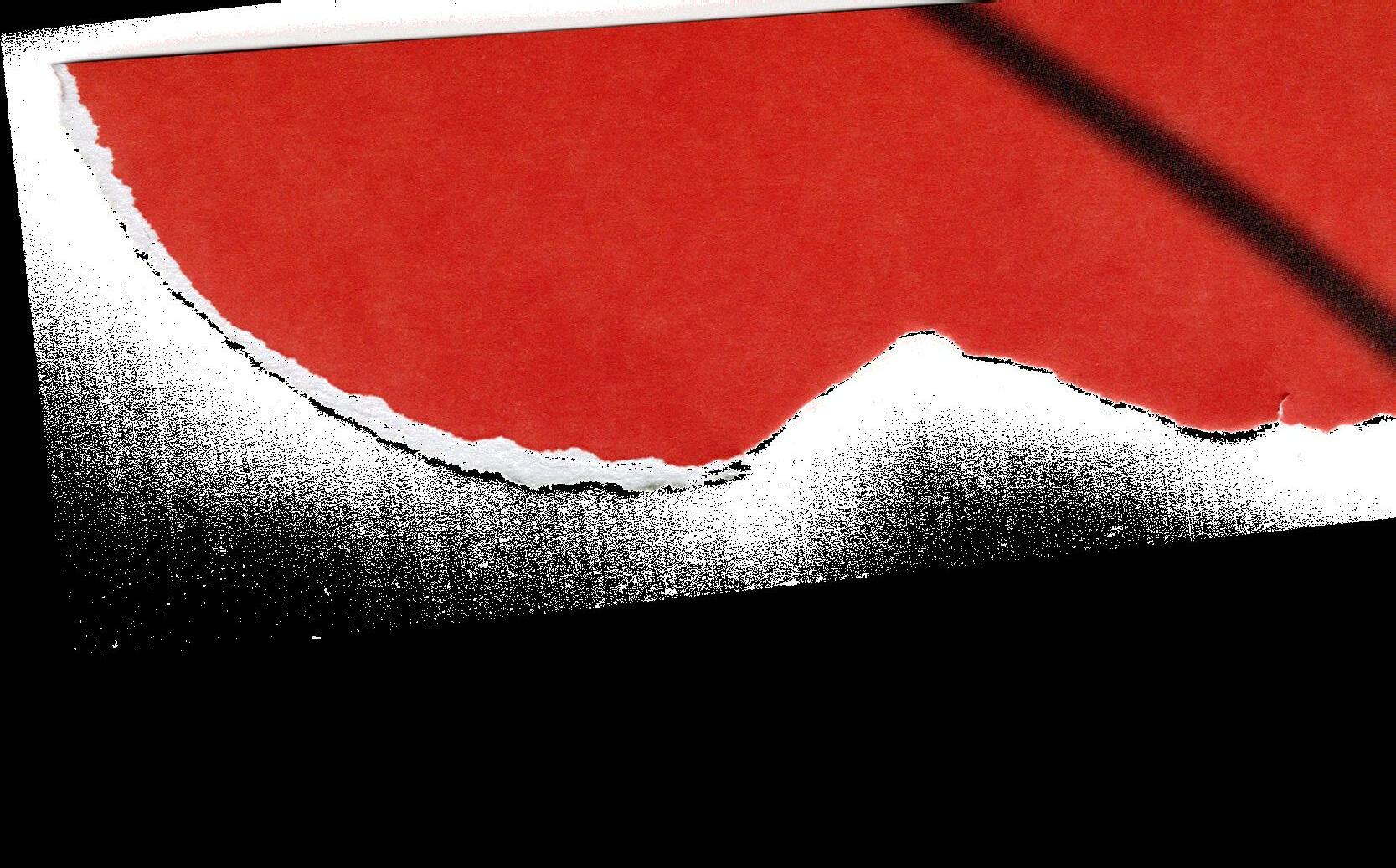
Thinking back to that first issue of this year is a funny feeling. Wondering what a Catalyst magazine would even look like. It was tricky, annoying and scary. But we got it done. Then we somehow did it four more times after that. Now here we are!
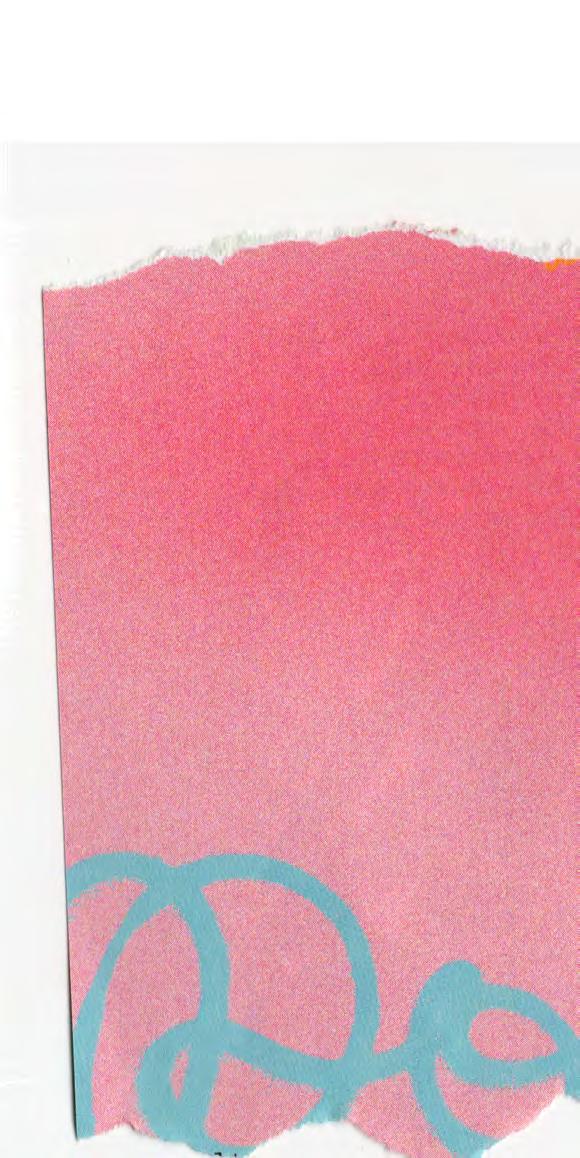
Time to say my thanks.
Thank you to anyone who submitted any piece of writing or visuals they made for Catalyst 78. Catalyst literally can’t exist without your work. So, thank you for putting yourself out there and trusting us to give it the spotlight it deserves.
Thank you to my fellow other designers Brianna Simonsen and Cherry Lin. Working with them has been an absolute highlight of my year. They are both so incredibly talented, amazing, funny, creative, unique, brilliant… I could go on. Their vision for this magazine from the layout to the colours could not be what it is now without them. I’m really going to miss working with them.

Now to handball Catalyst over to Olivia, Charlie and Mihika.
I wish them the best of luck with everything that comes Catalyst’s way next year. I have complete faith they will continue the work we started this year and bring it even better next year. But most importantly, I hope they have fun.
With love, Viv :)
Issue 05 c.2
What will we do next?
‘What will we do next?’ ponder The Orchids through my headphones, as I write my last piece for Catalyst as an editor and as a student.
The question holds a strange weight, the kind that’s heavy to hold but seemingly slips out of your hands like sand. Once you’ve found an answer, or even come close to it, there it disappears out of sight. The words trail off to an unknown place.

A part of the question considers a chase – you know the one. You’ve had your last sweaty dance at the club. You’ve caught the last ray of sun at the beach. You’ve watched the credits of the movie roll. Then it comes, someone says it, beats someone else to it: What will we do next?
Perhaps it’s a generational thing when we ask ourselves. Maybe it’s our desire to have it all figured out - every move and every step – under the guise of nonchalant curiosity. Perhaps it’s even a capitalistic thing, symbolic of the craving for direction and hustle, where a moment alone and in thoughtlessness is merely a waste of time.
The notion has never felt so pertinent, real, inescapable as it has now. I have a few weeks left of university and it’s a bittersweet realisation.
I met my friend Lauren at orientation – the girl in the cool jeans, the big smile and puppy eyes. In the crowd of fresh-faced, naive eighteen and nineteen-year-olds, we gravitated towards each other. Conversation was a chemical reaction, a cosmic understanding between two people. Intuitive words spelled the future out for us.
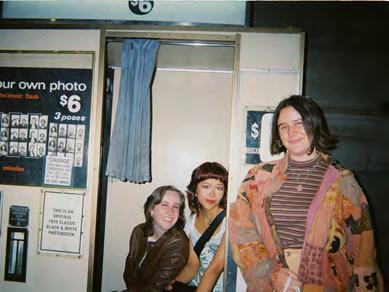
After the campus tour, we had asked The Question, which resulted in us sitting at State Library, devouring the sunshine. In that moment, our what will we do next? was vocalised in the form of,

CURTAIN CALL c.3
We should go see Wallows if they tour / lets travel on the uni breaks / we should study at cafes and watch all the films assigned in cinema class together.
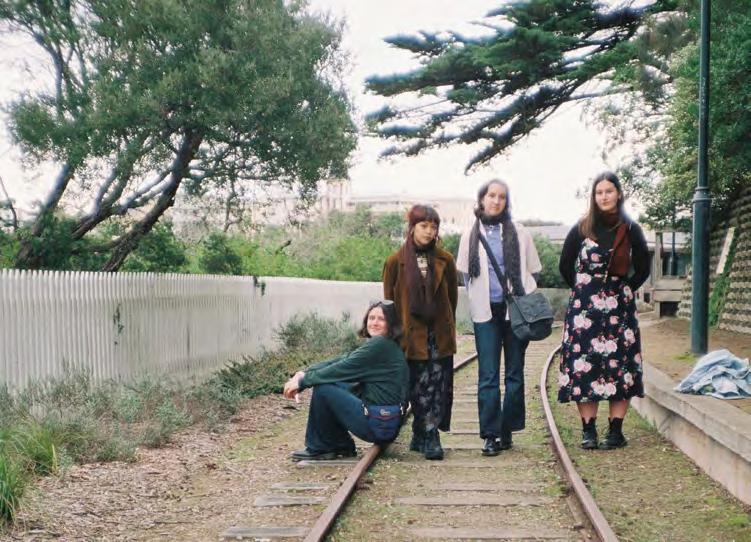
It was the hope in transition. We found whatever comfort we could in fantasies of our collective new chapter – we were uni students now.
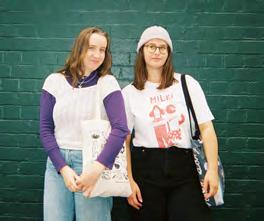
We didn’t know a pandemic would strike and that we’d only see each other five times over two years. We didn’t know we’d spend more time on screens than on campus. We didn’t know a portion of our twenties would be in isolation, amidst makeshift loneliness. We didn’t know how little time we had. We didn’t know that everything we had hoped for would be postponed, redirected somewhere in the archives of our dreams.
Fast forward two years, and we’re in our last semester - older, wiser, with new haircuts and music tastes, perspectives on life and new cool jeans. Lauren and I didn’t know it on the grass of the State Library, but our what will we do next? would manifest into many things.
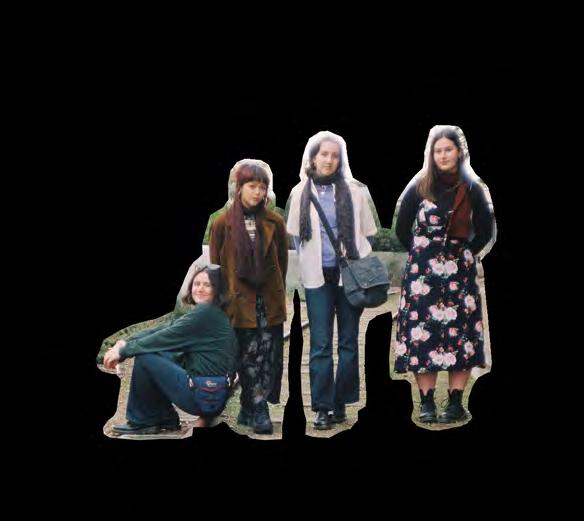
We’d befriend Bea and Izzy – la fille en rouge and our camcorder director with the indie ankle warmers. Our timetables would match, meaning coffees and chats before class, and afterhours spent in delirium, lying on patches of grass on Lygon Street, or laughing and wandering around Fitzroy. We didn’t know it – that our university experience would offer more than Zooms and deadline extensions. In a seeming instant, we were here – Bea and I, the editors of the student magazine; Izzy and I, the pair giggling to no end;
Lauren and I, the first friendship; and the four of us together, drifting between who we once were, who we are now and who we are yet to become.
We’ll ask The Question often, in small ways like if we’ve taken the wrong tram, or in infinite ways like what to do with this youth, this life. If there aren’t answers for neither, I’m grateful we still have our imaginations.

I extend this ramble to the Class of 2022. For when you walk out of Bowen Street for the last time, wave a friend goodbye; sip your last campus coffee; type the last word of the last assignment on the last day of your studies, and the first day of a new beginning.
I don’t know what will happen, but to channel Mary Oliver, I do know this: the grass will grow, the sun will shine, wind will wander and birds will chirp. And for that, it’ll all be okay.
Here’s to what we do next.
Savannah Selimi Issue 05 c.4
It’s Friday night: time to make the weekly trip to the video rental store. School’s done for the week and the weekend is approaching. You run towards the new releases section to grab something that had just come out, and pray the DVD was not scratched in any way. If you had a particular movie in mind, you’d race through the aisles hoping you weren’t faced with the dreaded words, ‘Sorry, I’m Out,’ which would strike fear in my younger self. If you found what you were so desperately looking for, you’d have struck gold. Otherwise, you’d take a risk and borrow something based on the cover, or a film you heard a friend mention at school. And who knows, maybe, that title could end up being your new favourite film.

I remember the layout of my local one well; new releases along the far left and back walls, a large 90s TV playing trailers on a loop harboured
high in the back corner, looming over you as you made that all-important decision. TV boxsets occupied the opposite wall, along with a smaller video game section, an old claw machine tucked away, and the Ghostbusters II clock hung high above the counter in all its glory.
School holidays would be a time to stock up on films, and a chance for us to beg to borrow a rare Wii game. I had the most important job of putting the returns through the letterbox in the door after a weekend of entertainment.
What started with a Video Ezy, Network Video or Blockbuster being a mere stone’s throw away, turned into being condensed into automated kiosks around shopping centres, before being phased out due to parent companies going into liquidation. It’s also no surprise another contributing factor: the convenience of streaming services.
CURTAIN CALL c.5
An independent rental store nearby closed right before COVID hit, and as such, were holding a large sale on all its stock. I went, out of curiosity, but also jumped at the chance to be able to step back into one after so long. I remember noticing the remaining items left for sale and recalling the ones I had scrolled past on streaming services, or spotting the film I had just watched last night looking for a new home alone on the shelf.
It felt empty standing amongst the gaps in the shelves, a hollow shell of what once was. The store’s neon sign I had passed frequently across the years was turned off. Movie posters covering the windows were peeling and faded over time.
People around me had armfuls of DVDs they wanted to buy, one guy even putting his stockpile on the counter while he continued rummaging, a pile so tall he could’ve started his own rental store if he wanted to. He was representative of us trying to clutch onto this moment. We know the humble video store was a critically endangered species; a case of streaming killed the video store. The credits will roll, yet we still pine for it; we long to rewind back to the beginning.
As stressful as it was to find The Perfect Film for the weekend, it is just not the same nowadays choosing a film without the chance of seeing ‘Sorry, I’m Out.’
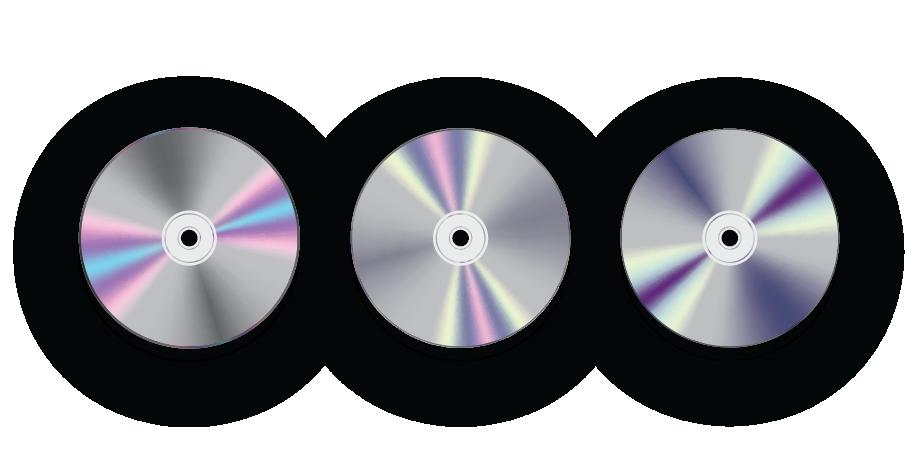 Diana
Diana
Vagas Issue 05 c.6
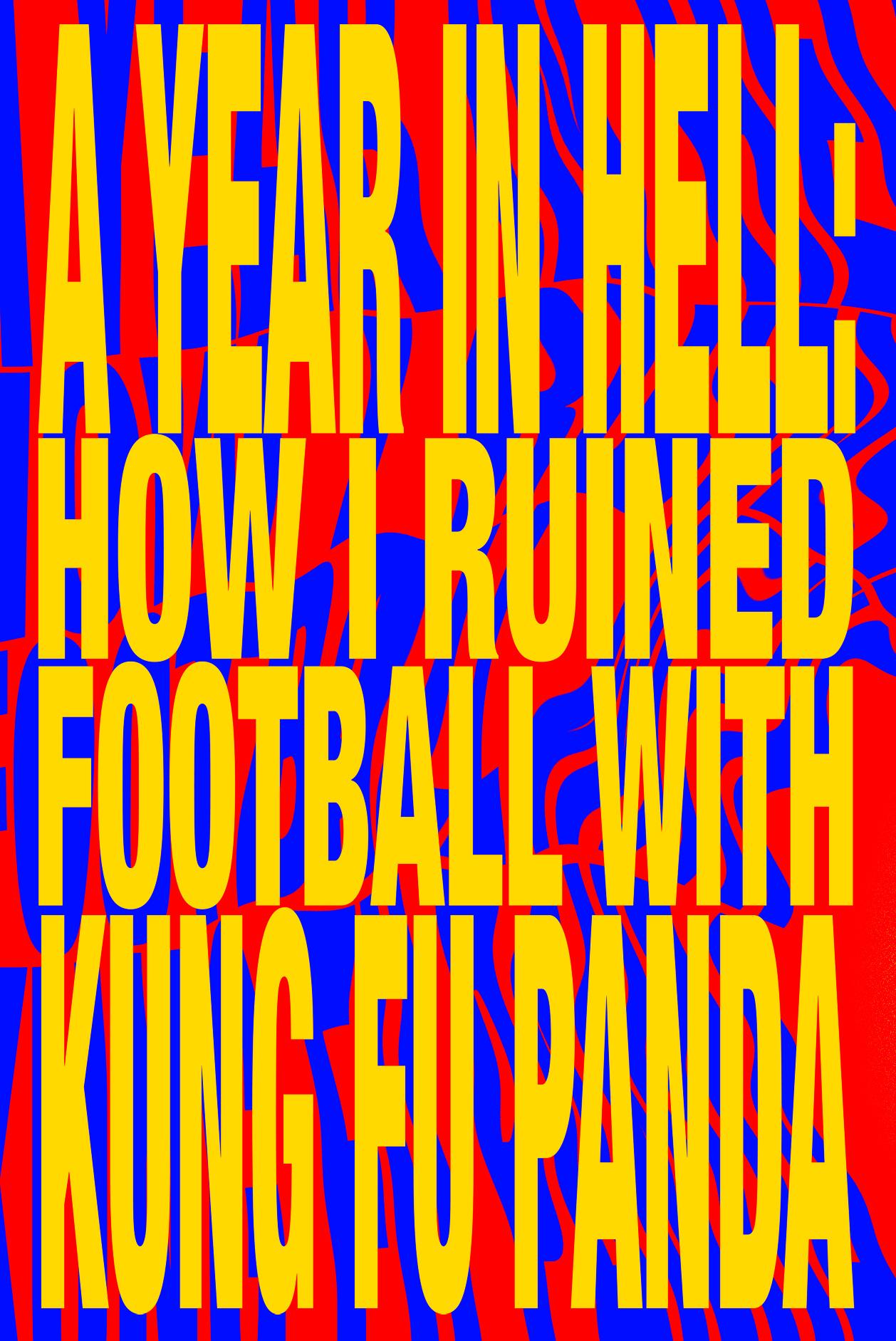 Luka D’Cruz
Luka D’Cruz
“I could laugh at it as much as I wanted, but this pact was no longer the stupid joke it had once appeared to be. It was a moment in time.”
On the precipice of a new AFL season, brimmed with excitement, apprehension, and optimism, yet another stupid idea began to brew in the collective hivemind of my friendship group. The three of us, none exceedingly confident for the outcome of our respective teams’ seasons, decided upon a pact to choose a film, and watch it every week in which our teams lost. Cursed with the naivety of a small child, I nominated that I watch DreamWorks’ Kung Fu Panda (2008) every time my team lost a game.
For reference, I support the West Coast Eagles. We lost twenty games this year.
Week one was easy enough to deal with. My beloved Eagles–rife with injury concerns and COVID outbreaks–were outrun by an energetic Gold Coast Suns outfit. This is as customary a loss as you can get. The better team won. I lumbered my way upstairs, fired up Netflix, and moped over Kung Fu Panda for ninety minutes. End of story. Everything’s fine. Move on.
How about two weeks in a row? I’ve definitely been through worse. My team may be without a win to start the season, but the birds are still chirping outside, and I’m happy and healthy enough that my positive mindset has not yet begun to waver. In my hubris I tell myself that every forthcoming Panda rewatch could in some way be constructive, and that it was even possible for me to enjoy it. In my hubris.
But I persist. In as many weeks, I find myself opening up the Netflix app for a third time. Like lyrics in a song, I notice that I can mouth off dialogue to my television with perfect synchronicity to the characters. Each moment becomes predictable. Any ounce of surprise that had been supplied by my misremembering of the film from when I saw it as a child was now non-existent. I write a review of the film, attempting to engage with it analytically, as if to promise to myself that this venture into the Pandaverse would not be worth nothing.
If deep, harsh, and serious introspection hadn’t already taken place, it began to truly bubble onto the surface by midseason. Ten weeks in, and only one week of temporary reprieve to show for it. I could laugh at it as much as I wanted, but this pact was no longer the stupid joke it had once appeared to be. It was a moment in time. An era of my life. A chapter in the personal legacy of my football club, one of which I’d be hard pressed to forget. Echoes of Jack Black’s Po uttering the phrase ‘skadoosh!’ ring ever-present in my ears and life before Kung Fu Panda seems a mere figment of my imagination.
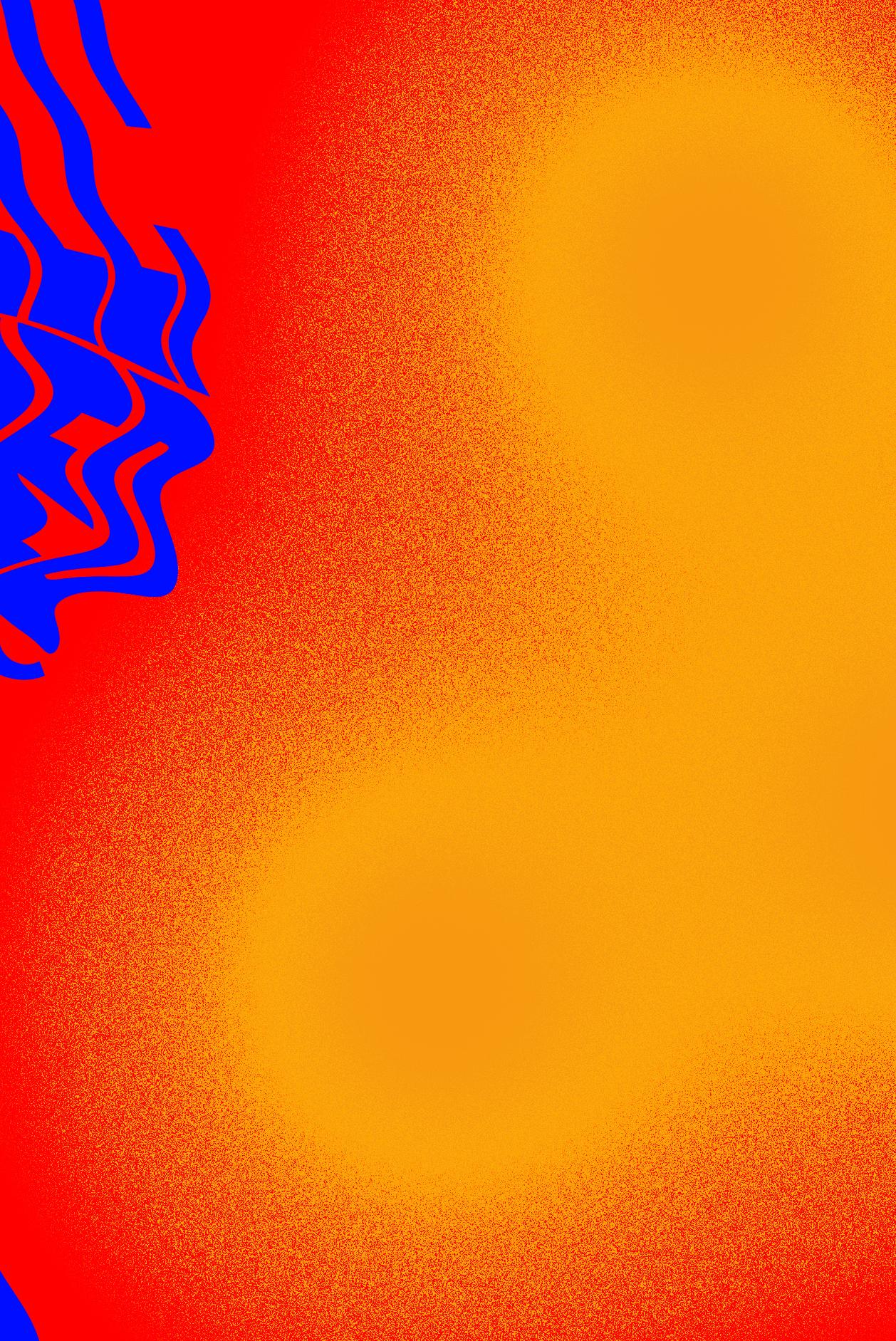
With the season finished, and my Panda rewatches concluded–notwithstanding any future ideas that I’ll be too stubborn to forgo–I think back to the review I wrote five months prior. I painted Kung Fu Panda as a story that challenges the broader archetypal structures that exist within our cultural fabric; we are so quick to fit people into the boxes of Good or Evil, Rational or Irrational, Smart or Stupid, that we forget that those structures aren’t inherent, and that they only exist because people embody them. It is through our effort and lived experience that we are defined, and beckoned to strive towards greater success.
Perhaps I could’ve embodied that instead.
Issue 05 c.8
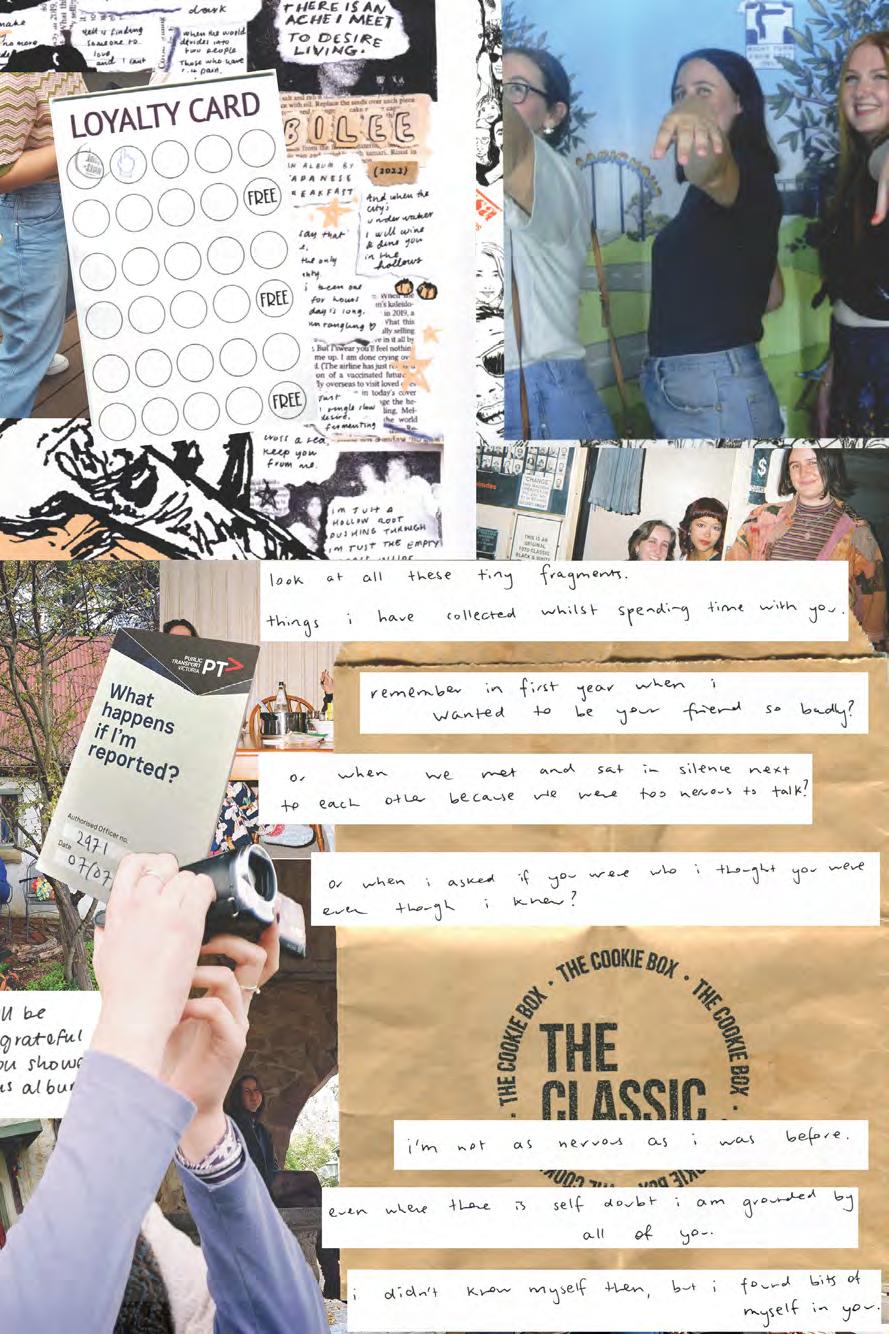


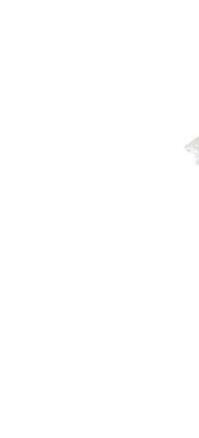 Lauren Facci
Lauren Facci





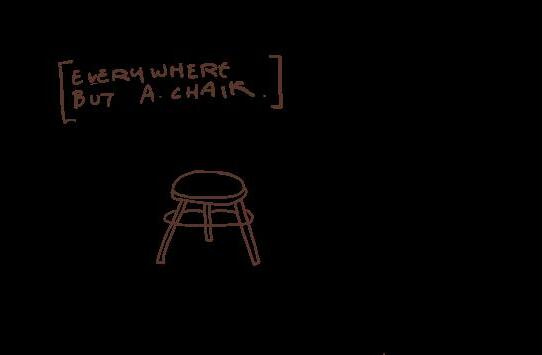
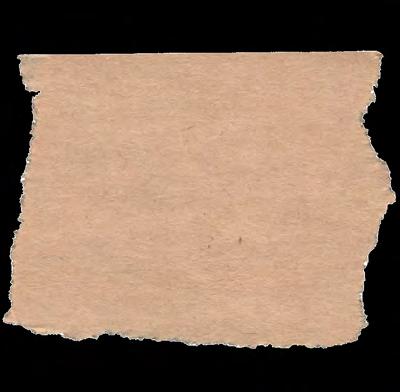
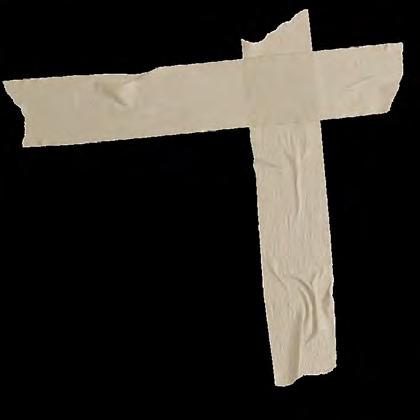
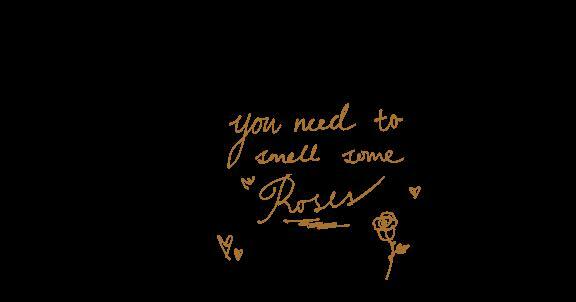
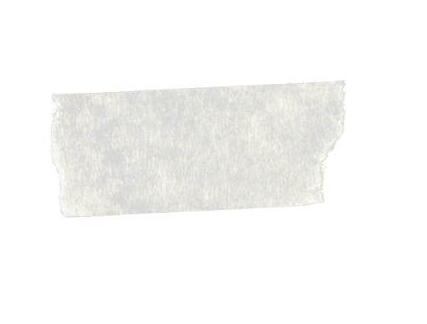

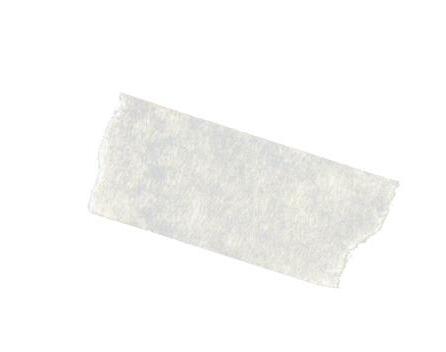





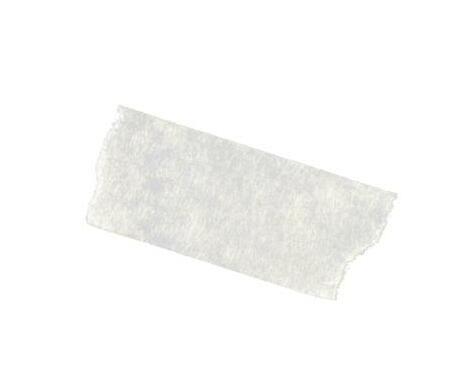

Tucked between the soullessness of a Starbucks and a confrontingly-lit Chemist Warehouse filled with teenagers shoplifting Katy Perry perfume, sits Swanston Street’s best kept secret. Its understatement is understandable – bookended by Melbourne’s iconography and dotted with colourful distractions, Swanston Street is a happening strip. If you haven’t previously visited or aren’t trained by the weight of your HECS debt to spot RMIT branding in your periphery, you may not notice The Capitol theatre at all. And yet, it is a locale so richly significant it is triple-heritage listed.
The Capitol was designed by Americans Walter Burley Griffin and Marion MahonyGriffin, who won the commission to design Canberra city. Said to be inspired by the organic shapes of a cave, the theatre’s architecturally innovative roof is decorated with crystalline plaster shapes that were lit with 4000 coloured globes for a visual accompaniment to the spectatorial experience. Replaced by over a kilometre of LED lighting, the inshow effect remains a dazzling rainbow dreamscape. The evocation of a cave –cold and grey – is lost on me; there is something less grounded, more ethereal, to its grandeur. To me, the lit-up roof is reminiscent of those online videos of soap bubbles slowly freezing, or perhaps a magnified butterfly wing.
The theatre opened in 1924 to great excitement, with six police officers stationed to control the crowds. Throughout the 1920s, the theatre elevated the cinema-going experience with unprecedented devotion to showmanship and glitz. Interior furnishings included a golden box office, star-shaped lampshades, silk-covered chairs in the smoking lounge and layered curtains ranging from metallic to jewel-tones. An orchestra accompanied screenings from a moveable platform, which would rise into audience view to cries of astonishment. Sophisticated ushers in black tie and satin flapper-esque dresses provided a glamorous commitment to audience experience.
And then there was Eliza, the first large Wurzlitzer theatre organ to hit Australian shores. Becoming an attraction in her own right, Eliza provided both music and sound effects to silent films. Made of mahogany and boasting 1000 pipes, her music was synchronised to the light show, providing an unmatched spectatorial experience that is difficult to perceive from our modern vantage point.
Alas, societal evolution could not accommodate never-ending highs. As the popularity of at-home television eroded the influence of cinemas, The Capitol’s lease was left to expire. A push to modernise the CBD was overtaking Melbourne, leading to the demolition of old buildings.


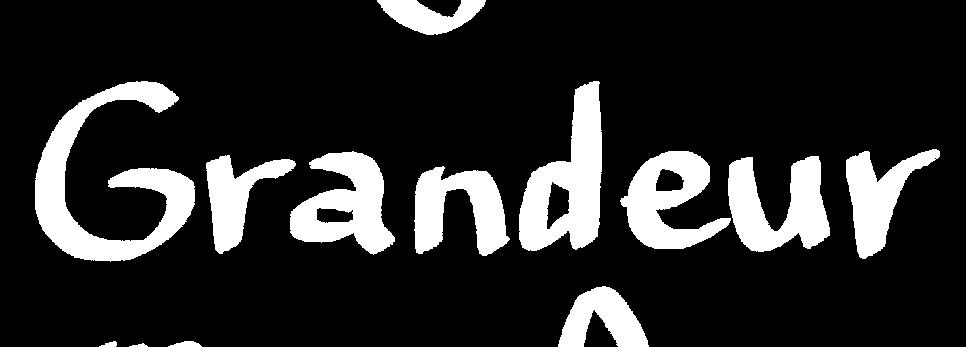



 The Capitol is offering Catalyst readers a discount
The Capitol is offering Catalyst readers a discount
CURTAIN CALL c.11
In response, a movement to save The Capitol emerged, backed by influential architects, including Robin Boyd, who, in 1965, said it was “the best cinema that has ever been built or is ever likely to be built”. In compromise, elements of the cinema were demolished to accommodate a shopping arcade. Eliza was relocated to Brighton’s Dendy.
In 1999 RMIT acquired The Capitol and committed over 2 million dollars towards its restoration. Nevertheless, in 2014 the necessary work was deemed too substantial and the building was closed. An appeal in 2017 prompted a crowdfunding campaign that successfully raised the 18 million dollars necessary to reopen its doors in 2019. The venue enjoyed several fleeting months of success, a tribute to Melbourne coming together, before the 6 punishing Victorian lockdowns.
It was during this brief optimistic period that I first encountered the venue. During O-Week 2020, I joined a line wrapped around the block for a free screening of Parasite (2019). Captured by the dancing rainbow lights on the geometric ceiling, I had my ‘crossing the Manhattan Bridge’ moment. Coming from perpetual suburbia and chain cinemas tucked into Westfield shopping centres, I was overwhelmingly affirmed in having made my move to Melbourne.
Incidentally, the screening was overbooked and I had to leave and watch Parasite at a Hoyts – but the forbidden fruit of it all only fuelled my reverence.
The Capitol is undertaking one more appeal – this time, to restore Eliza, who was brought back home in 2021. She now sits on the theatre stage, with her pipes held in storage across the road. Another $250,000 is required to bring her back to her glory in time for The Capitol’s centenary birthday next year. It may be hard for us to conceptualise the value of such an endeavour when it is possible, in 2022, to make pop bangers with a QWERTY keyboard. And yet, if the impact of The Capitol perseveres, is Eliza not a symbol of its very magic? Of the affective hold a night of culture can have upon a person?
As RMIT students, The Capitol is ours –it is denoted as ‘Building 113’ on many a timetable. The Capitol has expressed the desire to give itself to us, to support our work, to become a meeting place and deliver to us what other cinemas cannot. I implore you all to engage with it, for we are so blessed to have its signage match our student cards. Whether it’s by donating to the Eliza appeal, emailing The Capitol with ideas for events, or by hopping on the tram after class to experience the Capitol’s timelessness –as has been done by many magic-seeking Melbournians for almost a hundred years.
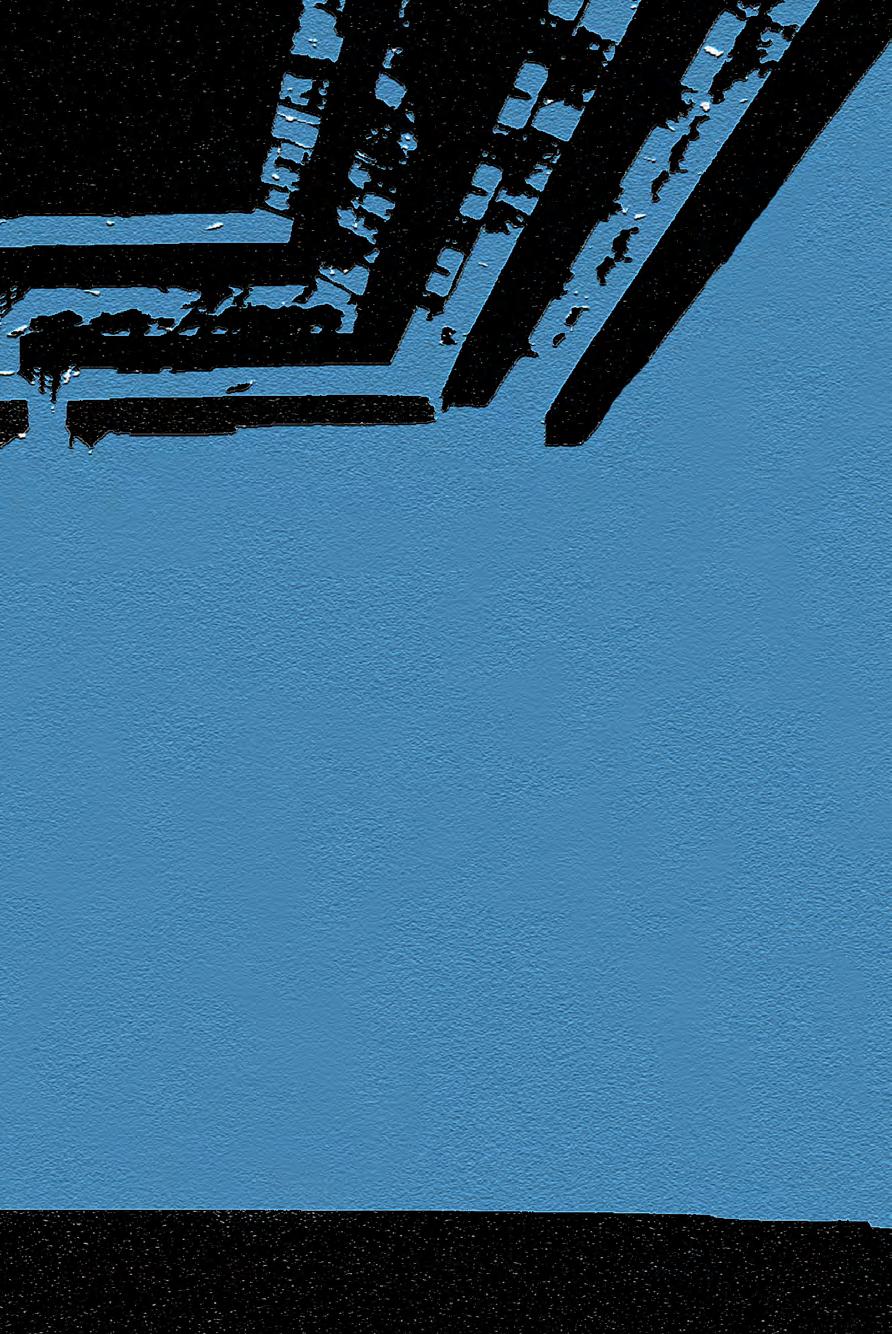
discount on selected events with code RMIT22


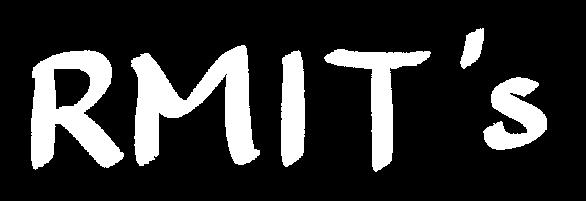 Alice Manderson
Alice Manderson
Issue 05 c.12
ELVIS
Baz Luhrmann’s Elvis (2022) is an epic display of stylish flare, rolling on for a bolstering 2 hours and 40 minutes. It feels like an Avengers movie and says just as much as an Avengers movie. It’s funny, because Luhrmann, during press for Elvis, described the film as less of a biopic and more of a superhero movie. That’s not to dismiss the film though, as it certainly captures the icon of Elvis on a scale that is grandiose that makes him feel cemented as “The King of Rock-and-Roll” that he was called.
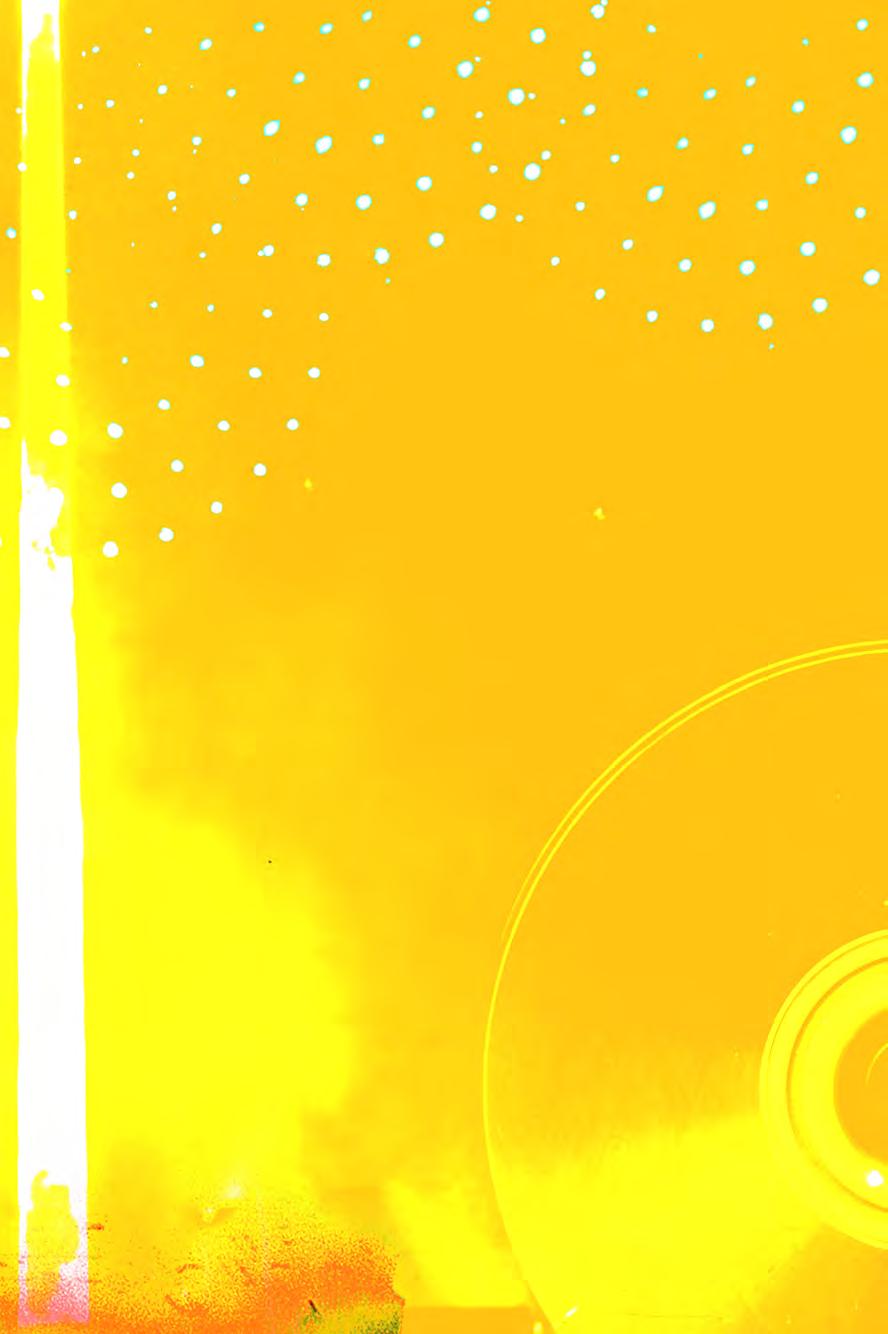
And Tom Hanks really leans heavily into the cartoonish qualities of his double-folding chin bearing villain, Colonel Tom Parker trying to suck all the profits out of Elvis as he can, even going to lengths to profit off of his haters too.
The film, while being a historical retelling, is very loose in that aspect and almost all of its depictions of reality. But that’s its style! Because nowhere else would I see Elvis bare the superpower to make a crowd orgasm with his hip wiggle. Luhrmann also seemingly mixes in politics as driving factors to Elvis’s character narrative.
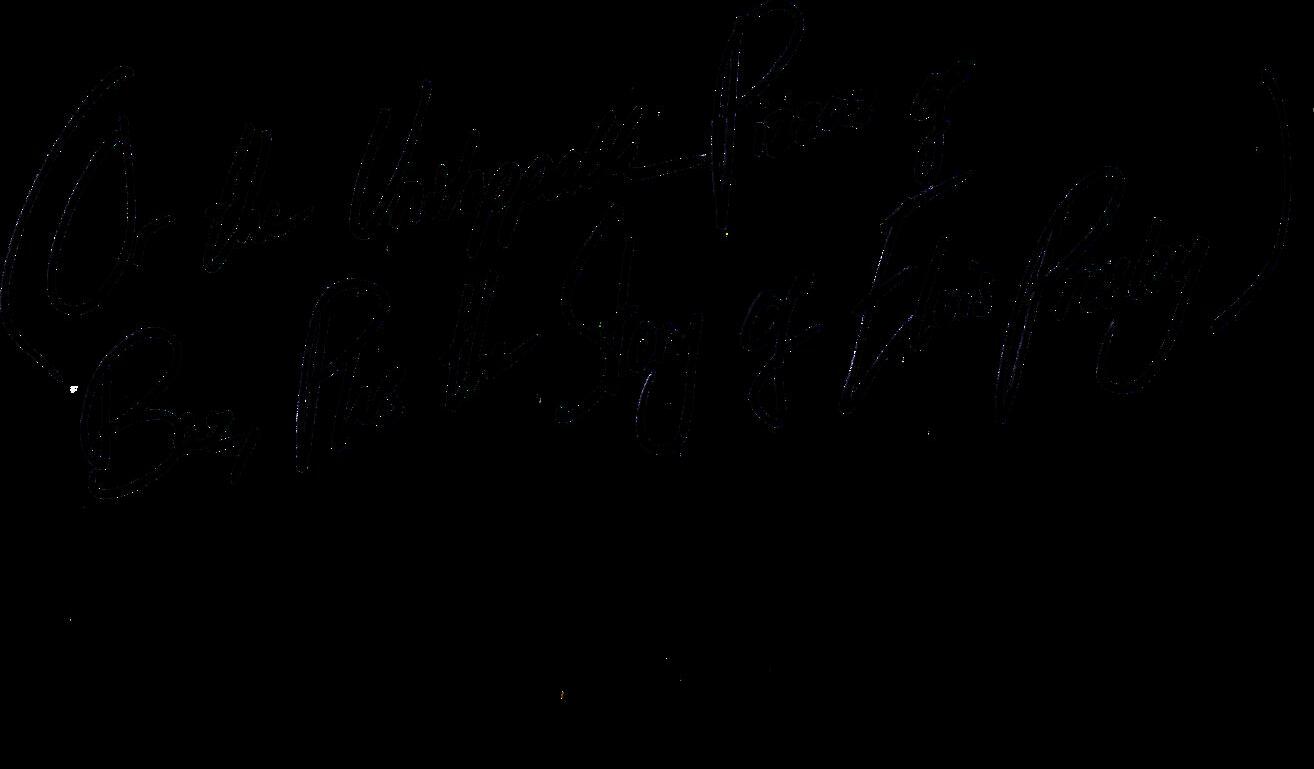
Robert F. Kennedy’s assassination being made a core part to Elvis’ ‘68 Comeback Special, seemingly occurring in the middle of one of their tapings - a fictional element added by Luhrmann, as the two events in reality were months apart.
There’s a divide amongst audiences when it comes to Elvis and a lot of that comes down to the story that’s being told, and Luhrmann’s focus on the legend of Elvis, rather than the real person. And of course, he leans
his filmmaking indulgences into that alley, bringing together what’s an inspiring tale. However, one could see Luhrmann’s style as superficial, ignorant of the many flaws that Elvis – the person – bared. Or simply see it as a migraine as the film progresses at such a pace that it doesn’t feel like there are any scenes but instead, feels simply like a two and half-hour montage sequence.
However, I must acknowledge that Luhrmann’s style is divisive, yet with over two decades of films under his belt, the filmmaker has come to know his critics, and still proceeds unabashedly himself. Just like other filmmakers like him –including that of Wes Anderson, the Wachowski Sisters and Zack Snyder, who have created a longevity through a recognisable tone and style to their films that they’ve committed to for years – there is almost a pre-determined bingo card as to what to expect. And yet, mainly in the case of Luhrmann and the Wachowskis, there’s so much you can’t expect that it comes as such a strange surprise when Beale Street, the home of Blues is introduced with a timeless undeniable Blues hit from the one, Doja Cat.
Elvis may be less about its titled character and more about its director, who splurges across the screen like a winning jackpot from a slot machine. But it’s come to be expected that it’d be partly about him and his indulgences, as that’s a part of why someone seeing an Elvis Presley movie, directed by Baz Luhrmann would go see Elvis, directed by Baz Luhrmann.
Max Vrancic
CURTAIN CALL c.13
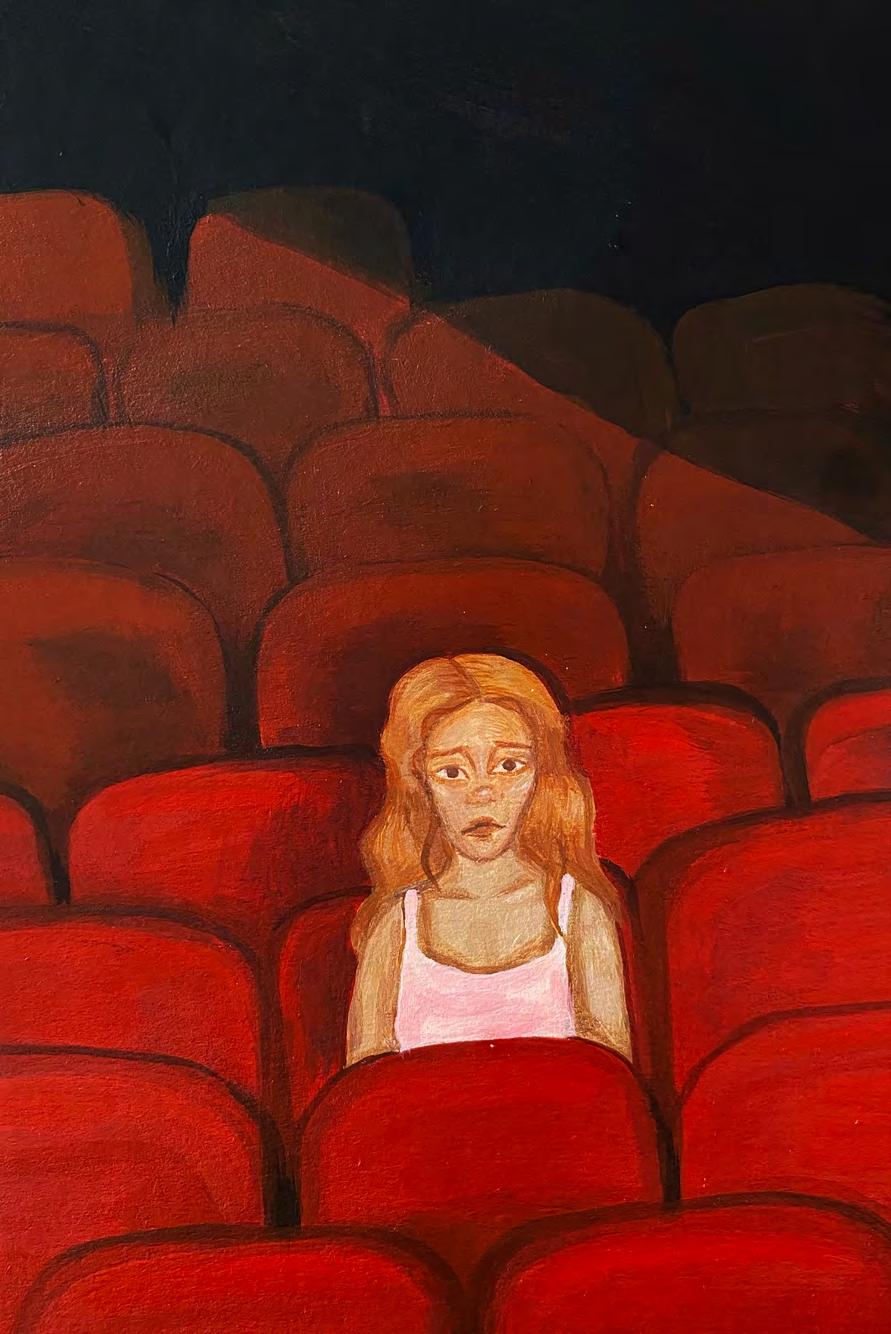 Tessa Remsu
Tessa Remsu
CALL IN ERINSBOROUGH
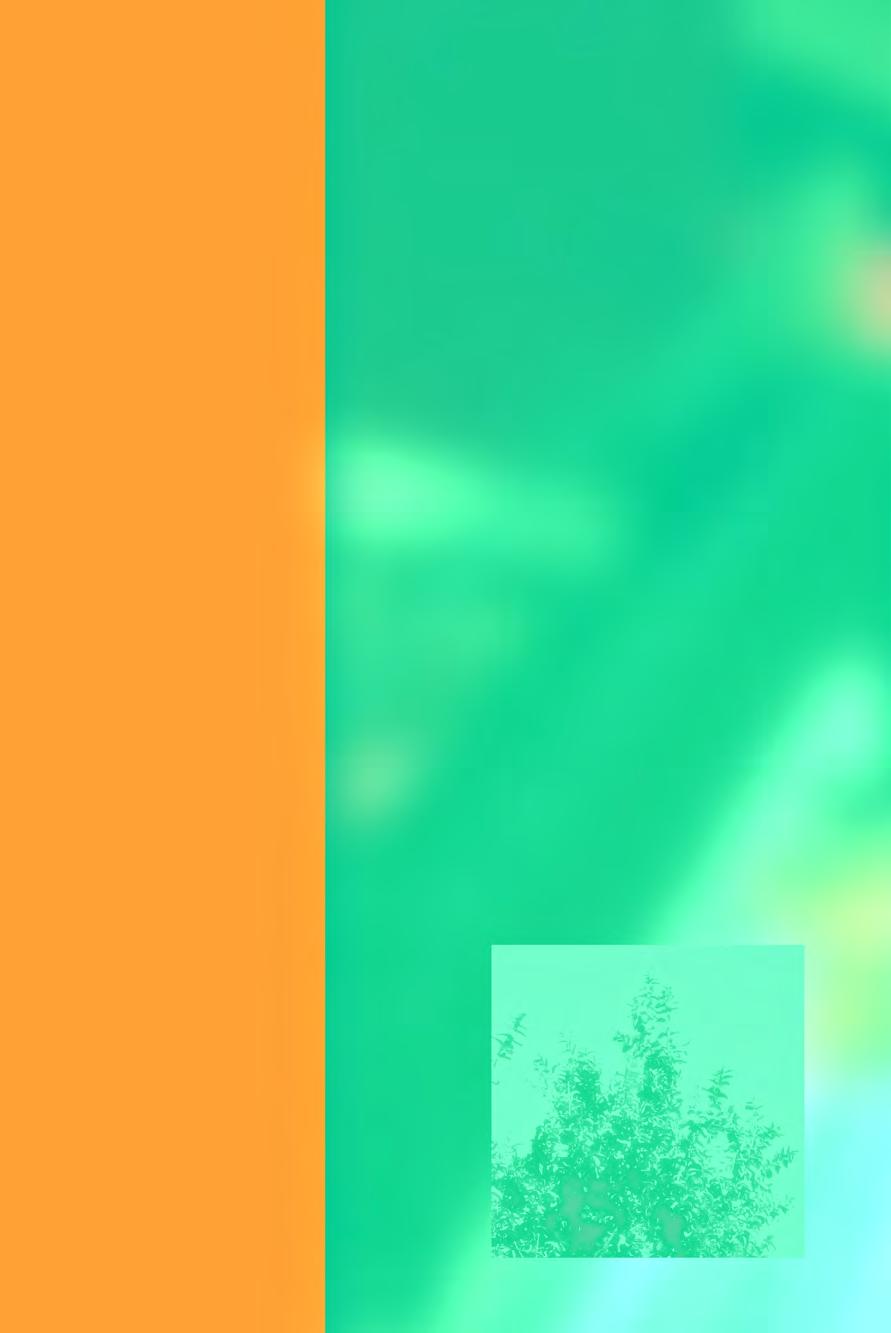
Those were the final words spoken by the Neighbours matriarch, Susan Kennedy, before a balloon full of confetti flew up into the stratosphere, causing it to pop and rain confetti down on the residents of Ramsay Street, as a mash up of every rendition of the iconic theme song started playing.
For 37 years, Neighbours has been one of Australia’s most iconic TV shows – if not the most iconic- following the everyday lives of the residents of a small street in the fictional suburb of Erinsborough, Victoria. Drawing in viewers not just from Australia, but from the UK and the US and many other countries across three continents.
Neighbours has been the home to some of the most ludicrous stories that could only ever be pulled off in Erinsborough; including Toadie’s first wife coming back from the dead after 16 years, while her long-lost evil twin tried making moves on him at the same time, an amnesiac psychopath regaining his lost memories and attempting to kill half of the street on a deserted Island, and of course, every explosion, tornado, bushfire, death, marriage, divorce and birth that just can’t seem to go down without that touch of “unmissable drama”.
LAST
“We
have
been… The
Perfect
Blend”.
CURTAIN CALL c.15
Back in March of this year, it was announced that Neighbours’ UK broadcaster – and prime funder – Channel 5, decided to pull the plug on the show. Despite their exhaustive efforts, the producers were not able to find a new broadcaster, and thus there was no choice but to put the show “to rest”. Attention for the remaining episodes was shifted from the usual endless dramatic storylines to celebrating the history of the generation defining program. And of course, that didn’t come without the return of many iconic faces from the “eighties, nineties, naughties and teens”, and boy did they deliver.

As the final episodes came rolling around, many old cast members started popping up one by one: Ian Smith, Daniel MacPherson, Natalie Bassingthwaighte, Olympia Valance, Peter O’Brien, Jason Donovan and Kylie Minogue, the last of which famously only spoke five words in her entire appearance - you’d think she charged by the word. Of course, we can’t forget Guy Pearce, who arguably stole the show with iconic moments such as his return to Ramsay Street on his motorcycle, and then when he decided it was time to stay in Erinsborough after reuniting with his former love, “Plain Jane Super Brain”.
Despite only appearing in the last two episodes, Guy Pearce gave the role his all, taking part in some laughable scenes, exhibiting his humility and recognition of where he came from. And that wasn’t the end of it. An innumerable amount of older cast members also came back via video recordings as they congratulated Toadie on yet another marriage, including Margot Robbie, one of the biggest stars to come out of Australia, and Natalie Imbruglia and Holly Valance who unexpectedly showed up for a scene together that was secretly filmed in London.
What was set to be a bittersweet ending, with 5/6 houses worth of residents choosing to move away before different circumstances resulted in all of them choosing to stay, turned into a street party that tastefully concluded Neighbours’ time on the air as residents from all different time periods shared one final laugh with each other before they cut to the credits for the final time, and the curtain was called.
Think what you want about Neighbours, but its undeniably a quintessential piece of Australia’s history, and though it will likely never return to our screens, it’s safe to say that it will forever live on in the hearts of Australians.
Daniel Viglietti
Issue 05 c.16
Mary Poppins Music Boxes and Muchness
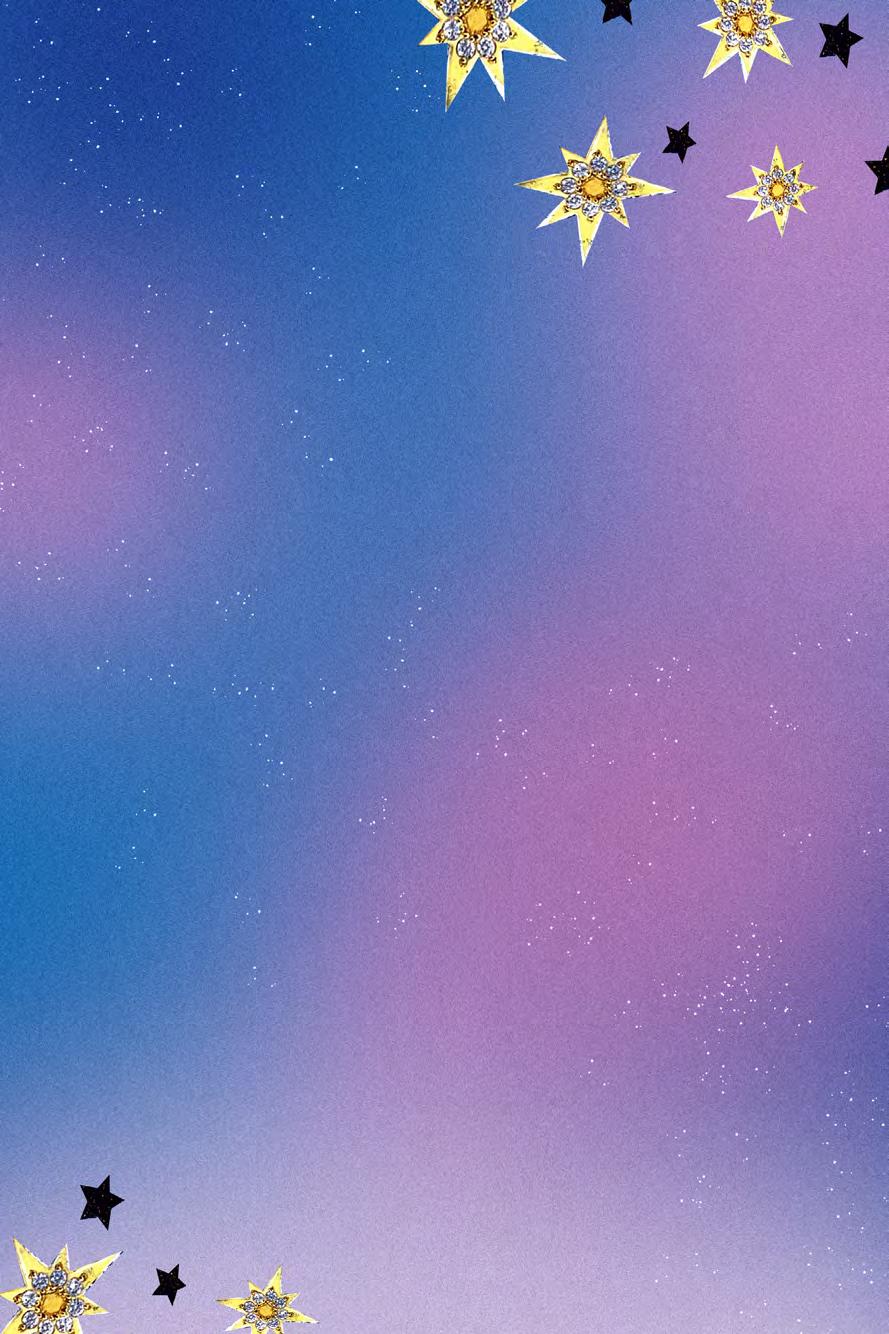
When I was a kid, there was this feeling I would get in the pit of my stomach when I could tell a performance was coming to an end. Swirling, stirring. Whether it was a pop concert, a musical, or a ballet, the blood in my veins turned effervescent when I sensed the curtain call drawing closer. But there was one performance when I was nine years old that didn’t spare me the time to have that feeling.
It was my first time at the Capitol Theatre in Sydney. The theatre’s exterior is relatively unassuming, tucked away in Haymarket – a bumbling nook in Sydney’s sprawling CBD. Stepping inside is like tumbling down the rabbit hole to Wonderland. Walking up the stairs you’re surrounded by classical sculptures, ornate golden walls and lamps set with emerald and ruby. And the pièce de résistance –look up to see hundreds of tiny stars glowing on a midnight blue sky.
On our way in, my eyes landed on a gorgeous snow globe music box at the merch table. It was quite big, not like those little ones you find in coastal town souvenir shops. The base featured a sculpture of the Banks family’s house. Suspended in the globe itself was, of course, Mary Poppins. Shaking the globe created a flurry of little silver stars not unlike those on the theatre’s ceiling. The lady behind the counter wound it up for me; it played Chim Chim Cher-ee from the original Disney film.
Kids love Mary Poppins the Musical mostly for one exact thing that happens right at the end. Just like in the film, the practically perfect nanny bids farewell to the Banks children, whips out a magical umbrella and flies away, up and over the audience. At nine years old, that sparked pure wonder.
I was lucky enough to see many other performances over the years that brought the same joy and awe. Now at age 20, I often worry that I’m losing that sense of imagination. Of course, we grow up and realise how things actually work. We learn that umbrellas, most unfortunately, cannot make us fly. Part of it is also just getting older, losing energy and this whole “go go go!” approach to life that we’ve convinced ourselves is totally normal. Recently, I thought being in the front row at a rock gig would be a great idea. That was until about halfway through the set when my legs started aching and I started getting hangry but in a thirsty kind of way (thangry?). In Alice in Wonderland, the Mad Hatter remarks to the eponymous heroine that since growing up, she’s “lost her muchness”. Is this what he meant?
Nostalgia sells. Culture news sites drown in it and almost every movie in the cinema is based on a story you’ve seen, read, or heard before. I heard just recently that Mary Poppins the Musical is coming back to Australia next year. It’s safe to say that, pushing 21, I’m no longer the target audience for the show, but you best believe I’ll be there to pull back the curtain on my childhood.
The music box is still in my childhood bedroom after years sitting unwound. But that’s the great thing about music boxes – CDs get scratched and vinyls skip and Spotify drops out, but that little music box will never rust.
Sabrina Caires
CURTAIN CALL c.17
 Sabrina Caires
Sabrina Caires
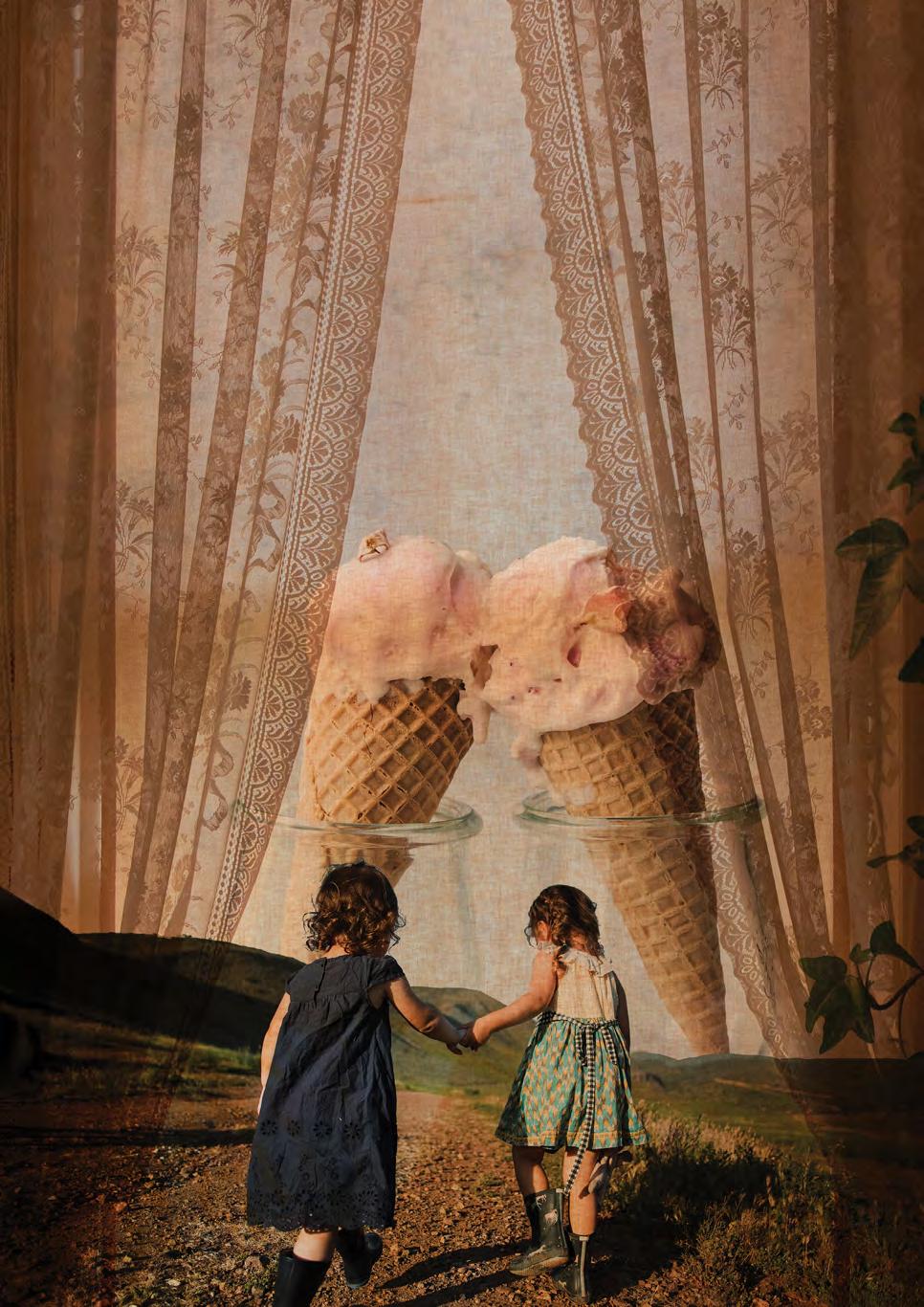 Charlie Borracci
Julianna Perkosz
Charlie Borracci
Julianna Perkosz
Open the lace
curtain grandma.
Bye bye, buttercake,
You outlined my chunky veins one last time last night as we sat on our shaggy rug in the space we first met. ‘This is the living room,’ I said, your peach lips excited that you have the prettiest lace curtains to hang in the front window. My intuition had its veil opened.
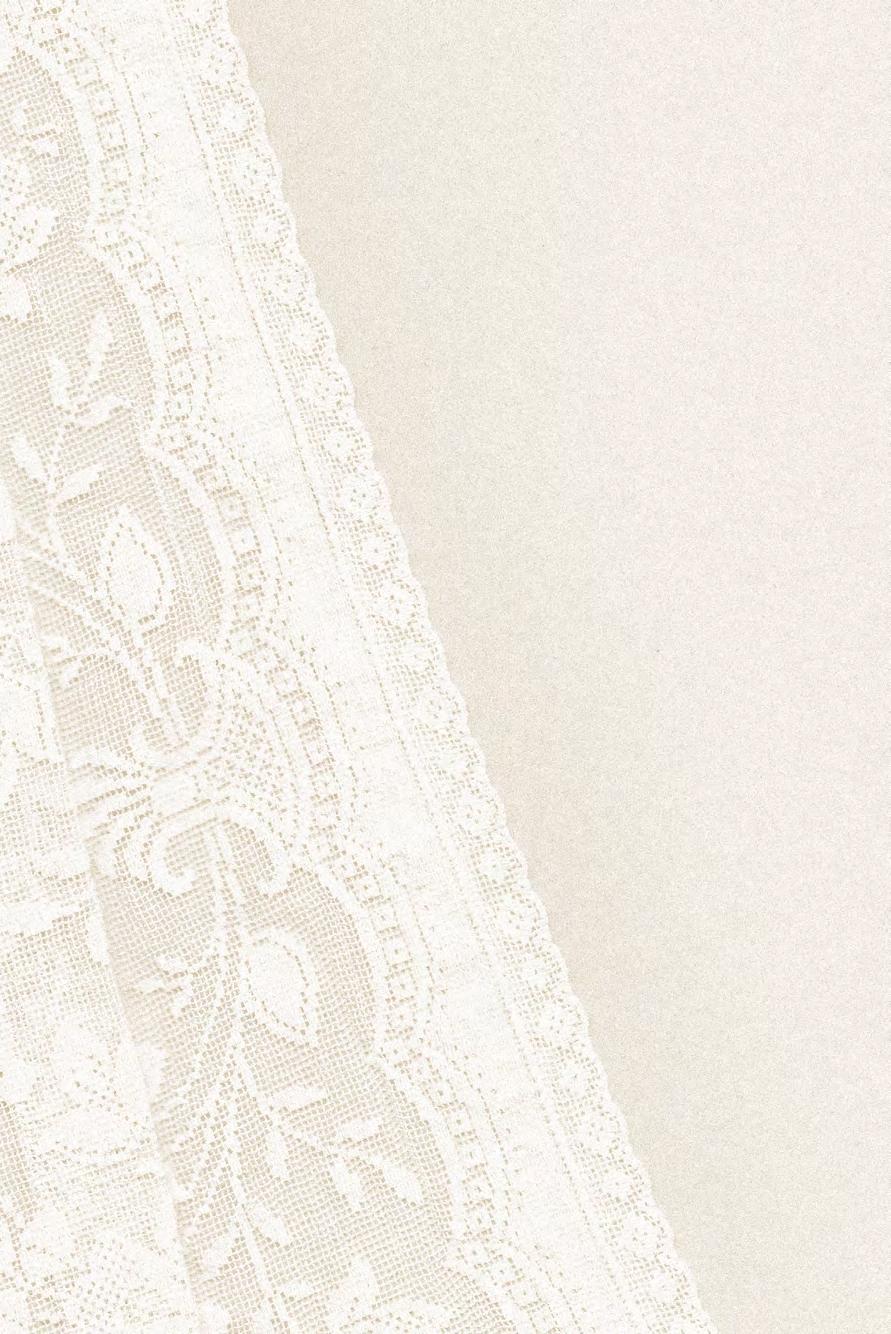
I will miss your oak drawers banging on 7am starts, but I’m sure I’ll be conditioned with 7am ceiling stomps. You liked the pearl earrings I bought you. Dragging the shaggy rug to my bedroom, I let loose a lake of salt water and left it there to purify my pores as the front door shut.
Bye bye, buttercake,
You said, ‘I love that,’ the banner painted in banana yellow and candy pink cursive, it hung against your grandma’s lace curtains. The front room was unusually bright, what a delight on your last day in our apartment. Your lips were outlined with whipped cream. I took your face in my hold, pushing it to wipe the left side, doing the same for your right side. Sparkly like a freshwater pearl, pearls with a metallic bowtie were dangling from your ears. Like the ones my babcia gave my mama, you teary-eyed before the cake came out on the pastel pink platter.
I will miss your banana yellow delight. ‘Let’s steal the Dyson from my dodgy aunt,’ you laughed once on laughing gas. I’d curl up warm, like a snail, on your bed, staining your left side pillow with boy-hurt-metears. You wanna toilet-paper his place? Banana delight bled from you. Not unlike the blood that poured from your legs, can you get me the oxy bubba? Two weeks later you didn’t have a banana seed in your stomach.
Bye bye, buttercake,
You asked, like you did every week, if Fitzroy North magpies understand what Moorabbin noisy miner’s say. ‘Maybe we’ll meet a bird expert one day,’ I said for the last time on the shaggy rug. You made the sign of the cross two times as the coo-coo struck six p.m. One last time. ‘I love you,’ you said, ‘but we’re too old to have housemates.’ I reminded her, ‘we’re 28. The banner on its last string, the sponge cake like a pedicure for our toes, we pour kirsch into sundae glasses and slow dance to the lace reflections from the afternoon sun.
Bye bye, buttercake,
Your room has the window open each day to let the spring air wash it.
Issue 05 c.20
Whenever I consider calling it curtains on this place and disappearing into the country, bright pieces of here pop up and persuade me to stay. The ping of a tram through thick stone walls. A bike zipping past with a smiling kid on the back. Someone dancing down Swanston Street, hardly aware of their movements. Graffiti on the Redmond Barry statue, on any statue of a dead colonial man. A street library, the state library, a local library to hold me while the rain passes. Anywhere in this city that lets me sit for a moment, out of the cold winds or thick heat, without having to pay for my place there. The way the rain sometimes falls so softly you can see each drop lit up by the evening light. The chimes of St Paul’s bells as I walk to the gallery. The din of a protest as I head towards La Trobe Street. Singers outside the Arts Centre, no matter how out of tune. Glimpses of strangers’ lives as they bustle past me. Snatches of conversation. I am wide-eyed in this city. A tourist in the place I was born. There is so much to see here and sometimes I think I’m the only one looking. I wander around with hands itching to take notes and duck into doorways to scribble them down. I wonder what you would make of me; this watcher, this starer, this uncertain guest. Every other day, I am caught eavesdropping and every other day I want to tell you everything I overheard. Everything I saw. Everywhere I went in the hours we were apart. I want to bring you to all these places that spark my mind into motion. I want to show you all the reasons I will stay here all my life. There are few things that could push me away from here, really. I was only being dramatic about calling it curtains. But if you ever flee this city – my beloved rain-soaked streets – I hope you know I’ll be right behind you, no matter how much it hurts to turn away.
Calling it Curtains
Kate Keenan
 Lydia Schofield
Lydia Schofield
CURTAIN CALL c.21
Box
A Shadow, Not a Storm Cloud
Grief is a monster, a companion, a thing with feathers. People do their best to put a name to it, but all l know is that it’s painful, and it’s unavoidable. The unholy combination. I was under the impression that I wouldn’t be faced with it, head on, for at least a few more years.
When you died, it took a hurricane in both my head and my heart to reckon with reality. And yes, you died. Not passed, not ‘no longer with us.’ Dead.
But slowly, I started this world, one where I don’t get to see you anymore. There were lots of tears, spacing out, days in bed. I was told a few times that it would “take time,” and I wanted to spit in the face of whoever would say it. Wanted to tell them “you’re wrong, what I’m feeling is brand new, you’ll never understand it and it will last forever.”
But, just like they said, I got used to it after a while.
Moving forward meant an unexpected side effect. Guilt.
What if I forget you? How can I laugh when they’re not here? Why should I get to keep going? Instead of the rawness it was, I find myself experiencing bursts. Sparks of pain, or reminders out of the blue. Maybe a number in the street, a shape in the sky, a pair of shoes in a shop, and I’ll think it means something. All it means is I miss you.
Now I can drive past that spot, listen to that song, get a handle on things. Because I can find new spots, new songs.
To close the door to ‘total grief,’ and open the window to ‘pushing ahead’. That’s the part you’re never warned about. They don’t write books about how bad you feel about getting better.
If you or someone you know is struggling with grief, Compass can help you. Drop in for a chat at City, Brunswick or Bundoora Campus, or email compass@rmit.edu.au.

Ruby
Content Warning: grief & mentions of death
background image by Charlie Borracci
Issue 05 c.22

CURTAIN CALL c.23
It’s in the review mirror now. It’s coming fast. The end draws near. Closer and closer. The intersection waits for a red light to turn green. The itch at the back of the head screams. Run. The waiting is agony. Every second matters. This should not be how it ends. Laying down and letting it happen? Not today. When the light turns green, it means go. Today I choose to go. The light flicks green. We go. Full-fucking-bore into that horizon. It won’t catch us now. Just because we’re all dead does not mean I have to be. Hair in the wind. Adrenaline running in every part of the body. This is living. If I crash? We keep going. If we run out of road? I keep going. Keep up and don’t fall behind. There’s a legend. The spirit of a cosmic force. They flew straight into the heart of a sun. Yet made it out the other side. They ride with us now. Can’t you feel it? Spirit hear me now. Never let this feeling stop. But I can feel it right behind. Inevitability isn’t far off. The curtain is soon to fall on our story. Spirit whispers. Go faster. Stopping means accepting. Stopping means losing. Stopping means dying.

GREEN MEANS GO
Vivian Dobbie-Glazier
Issue 05 c.24
Comment on Endings
Content Warning: grief & mentions of death
Nobody really knows how anything will end. Writers struggle to come to solid endings for their stories. Perhaps they think they already know the ending, but they develop the story more, and the ending changes.
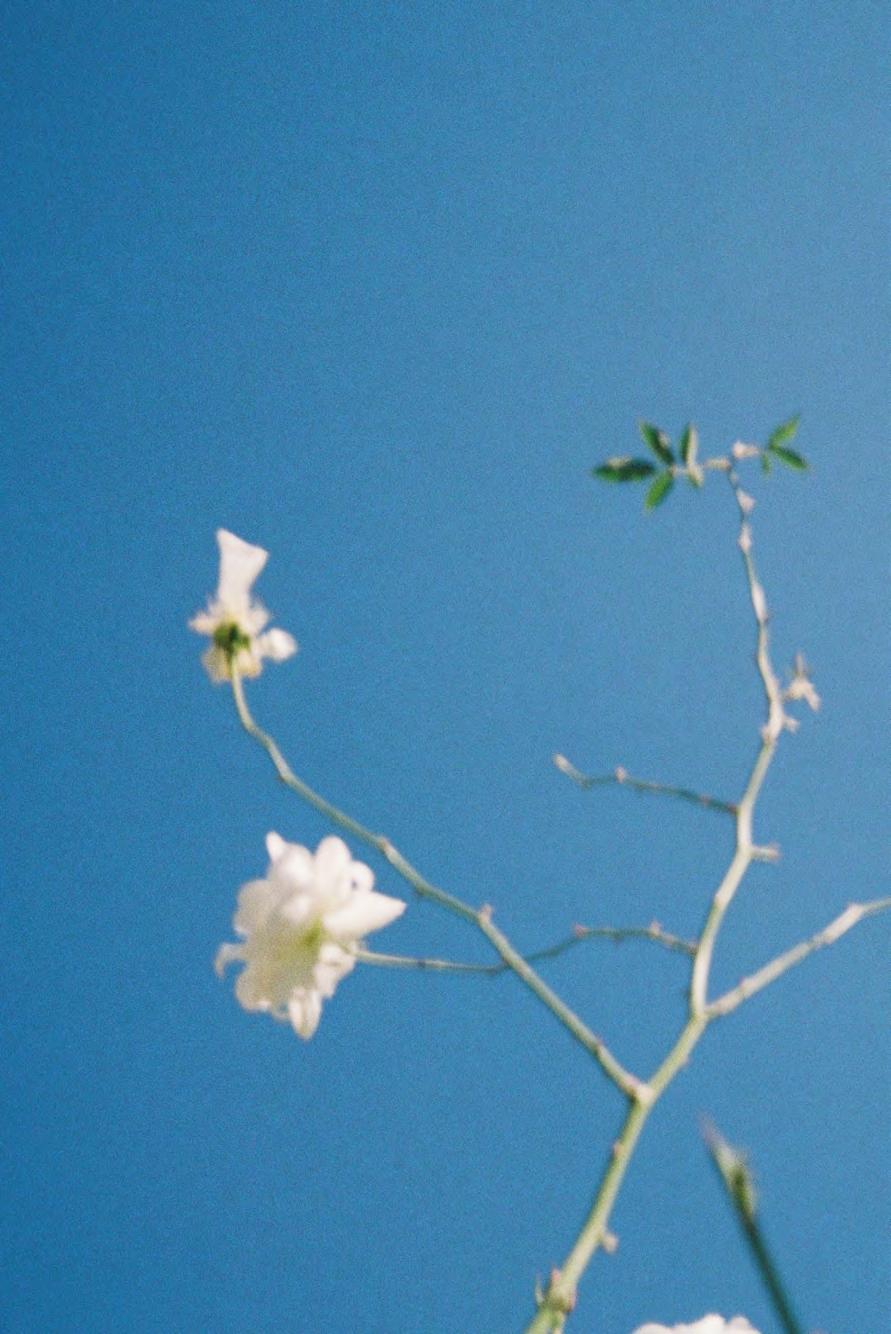
People die suddenly every day.People who you figure are doing well and getting better and are recuperating their life back in the right direction are struck out as though they did not matter in the grander story of life. Those who know the endings are doomed to never tell us, for they have passed into memory and collective consciousness.Endings are often cruel in this way. We try to piece together what we think may happen in our own grief and suffering but we cannot certainly know without proof. How can it be that those who are special are gone but those who may not be special are left here to pick up the pieces and figure out what the special people meant?
I was left to pick up those pieces and am still struggling to cradle them all in my arms. Sometimes I feel like I have a firm grasp on the pieces and then other times they scatter all over the floor again and in doing so my spirit is also shattered. I am left to figure out how all these pieces go back together again without the help of the person who knew how they all fitted together in the first place.
I do not even know where to begin with these pieces. After all, they are not even written in my language, they are written in the language of positivity, resilience and perseverance that was so common for her. They are riddled with her eccentricities and are carved with her infectiousness and lust for life. Where is my parallel to that? She was showing me these things in her own way, and I was learning this language but unfortunately that is no longer the case. She, like the language, has passed to memory. I am left with the confusing puzzle set of grief at my feet with tears in my eyes. Those who see the puzzle set at my feet can only apologise. “Sorry.” It is difficult to write about endings.
If you or someone you know is struggling with grief, Compass can help you. Drop in for a chat at City, Brunswick or Bundoora Campus, or email compass@rmit.edu.au.
anonymous
CURTAIN CALL c.25
 Beatrice Madamba
Beatrice Madamba
Issue 05 c.26
[sad] poetry on unsaid things
You were like the sun’s warmth after days of clouds and rain, like hot chocolate and warm socks on a freezing day, like a cold glass of water in the middle of the night, like soft rain noises just before bed, like varying textures of green in the wild, like applying balm to your lips, like the stars and moon on a clear night.
I never got to tell you any of this, I never even said ‘thank you’ or ‘i love you’, I never told you that you made me want to live again.
And now I never will, I’m sorry.
 Nishtha Sharma
Nishtha Sharma
CURTAIN CALL c.27
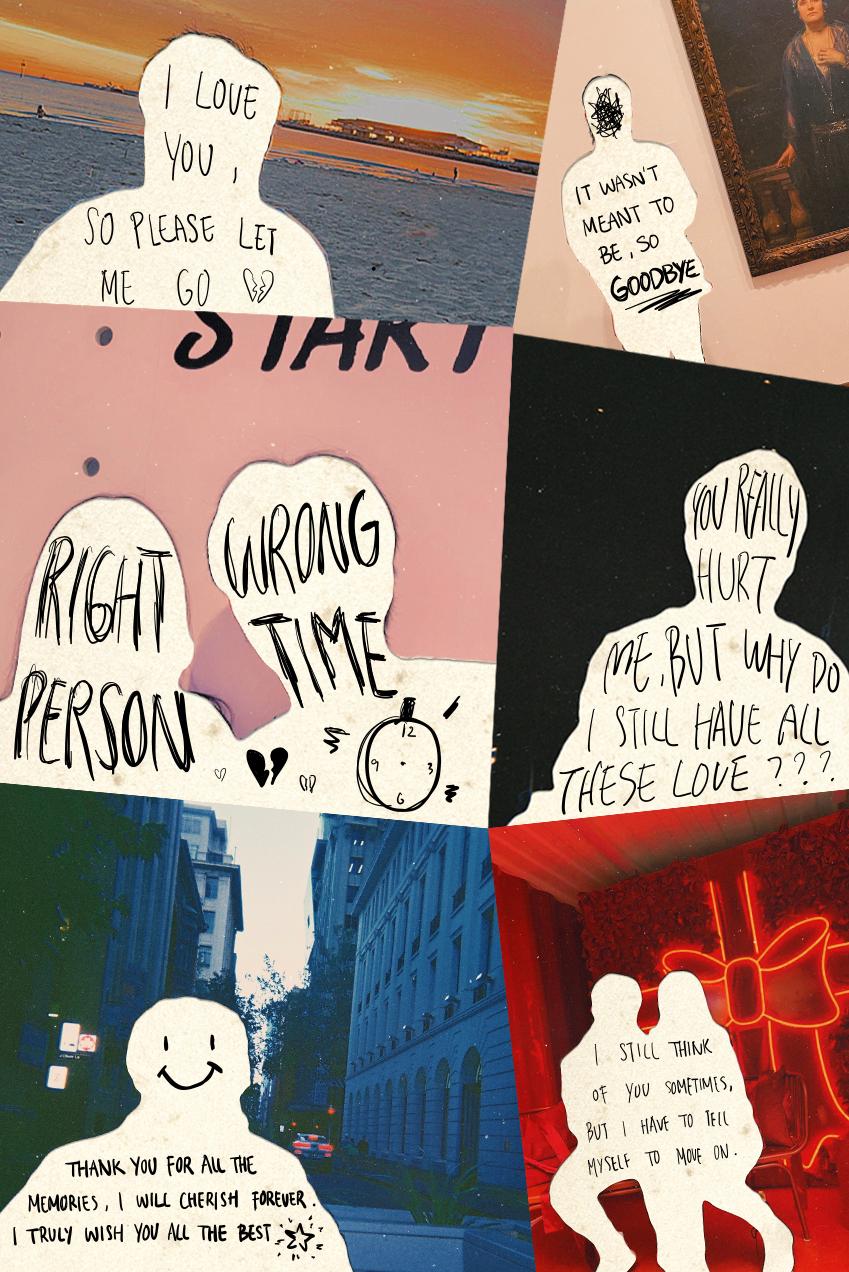
Cherry Lin
art is medicine and you’re a masterpiece something of stars and something of ash and something of the pain killers i overdosed on last may watch my hands as i talk to you watch the undying grief lose itself underneath my fingernails until it becomes me you seep underneath my unclean earth until the bones fragments inside my fingers are rotting through their carcass saint augustine weeps at all these posies and all these poems i condemned to paper because i have made friends with all my devils these are the sins my palms are tainted with from those who are condemned to love me whom I cannot save despite loving them back
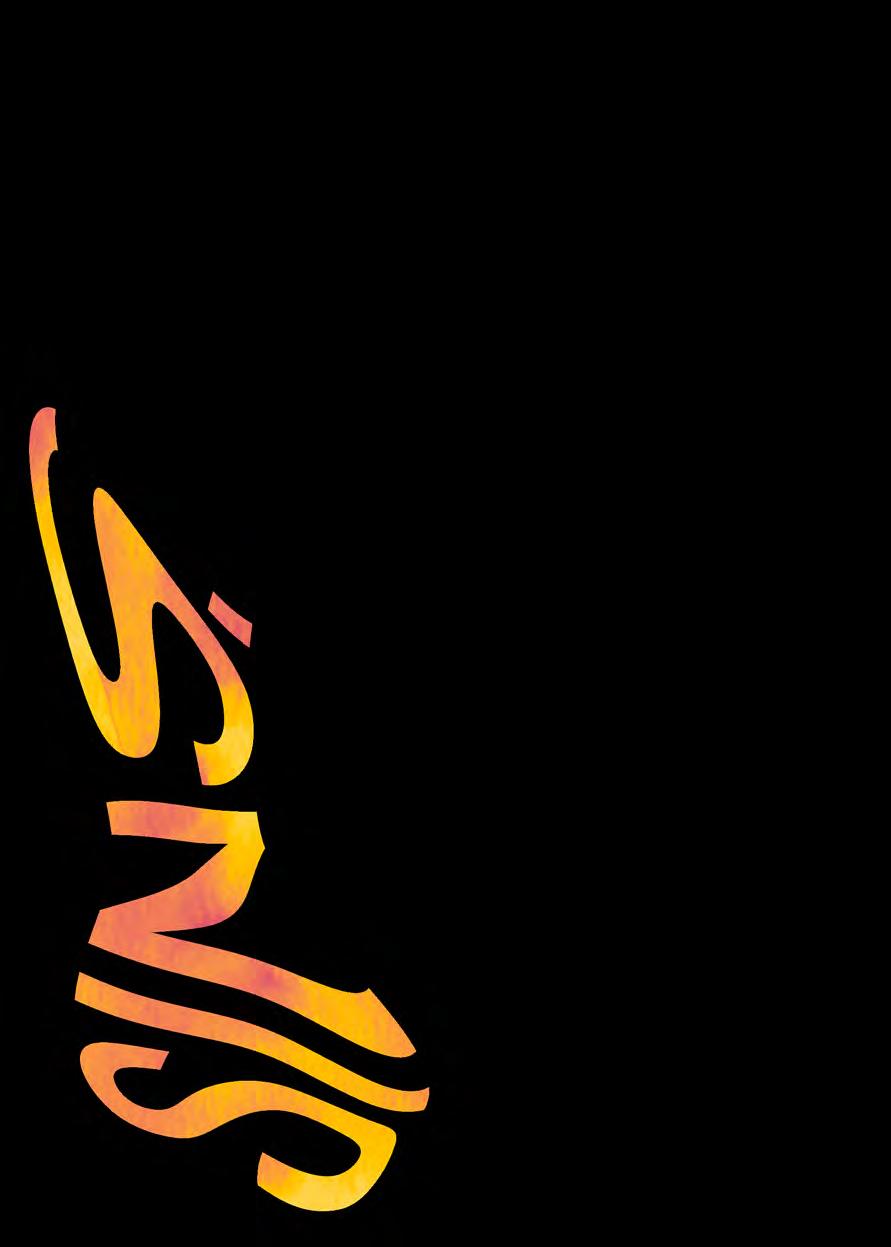

CURTAIN CALL c.29
you’re too human but not quite enough and i want to want to love you i’ve tried so hard my teeth hurt my mouth bleeds your bone marrow you taste the way I do bloodied, bloodless lips that want to want to forgive i made my hands for you i am what you made me
you’re made of a thousand watercolour scars
drowning my lungs rainbow you’re a disease that tastes of rosaries
these are my hands and i do not know how to pray with them not in a way without screaming your museums of dead gospels
i stand in the mouth of this abandoned church and forget that lucifer is not lucifer when you love him he is me
something of the glowing fragments of june that fall from my ceiling or the gardens of red rose agonies and unforgivable loveme-nots or the taste of my wounds that you had let go of
medicine is art and you’re morphine
something of cathedrals and something of sepsis and something of the ceiling constellations

i see when i lay on my floor and breathe until September this is my art, my medicine, my fall
 Chay Newman
background image by Charlie Borracci
Chay Newman
background image by Charlie Borracci
Issue 05 c.30
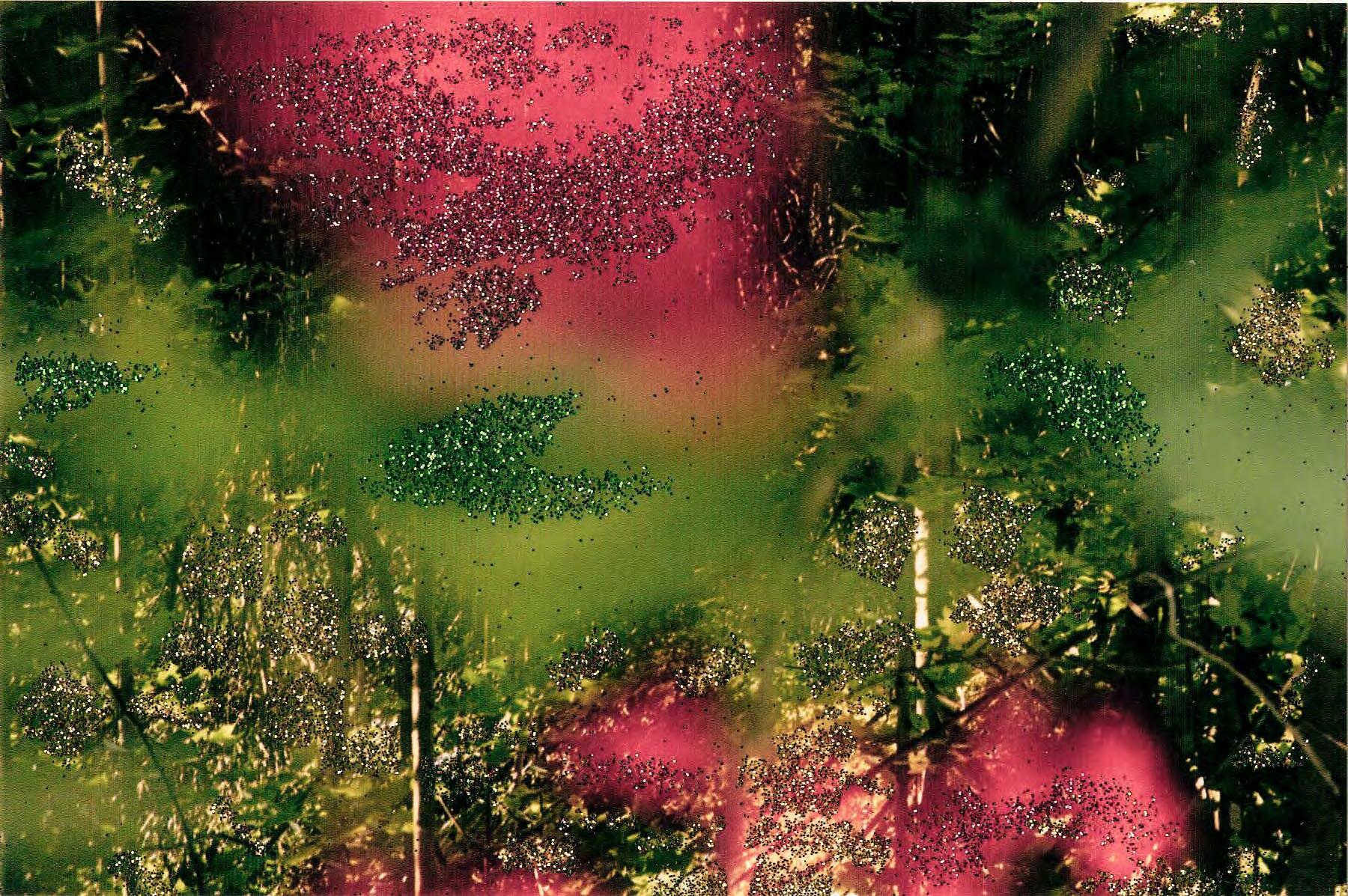
CURTAIN CALL c.31
Ping

Jing
Issue 05 c.32
DEADLY DESIGN SINS.
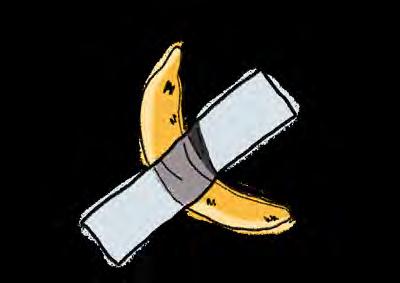
Crystal Parras from Ctrl+
When I first saw this chair I couldn’t stop thinking about it. Is it art or design?
1. ‘Red Blue Chair’ by Gerrit Rietveld.
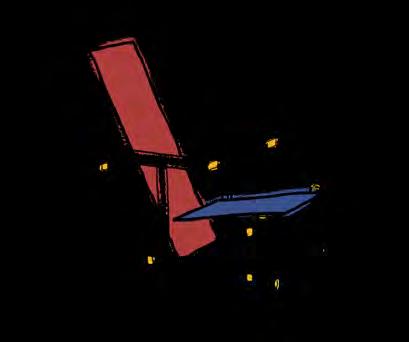
Constructed in a neoplastic design style, also known as de Stijl, this chair resides in the National Gallery of Victoria (well, for now - we’re borrowing it). Both its origin and its location suggest that this chair is art, but it doesn’t seem to bear any kind of message or deeper meaning like some people believe art should. Art critic Jonathan Jones argues the opposite, that ‘the best art is meaningless, that it’s all about style over message or function.’ Yet this chair remains perfectly functional and seemingly ergonomic (although I can’t atest to this, as the security guard was doing a good job).
So is it art? Is it design? Both? Neither?
Art is luxury. To create art in a capitalist society implies the time and money to do so. An artist may choose to imbue their work with a message; they also may not. The value of their work will ultimately be decided by a group of wealthy people who want to dodge their taxes via ‘charitable donations’, and then we all end up wondering how a banana taped to a wall is worth over a million bucks. Not to dunk on ‘Comedian’ but come on: designers don’t get that freedom.
2. ‘Comedian’ by Maurizio Cattelan.

1. 2. CURTAIN CALL c.33
DEADLY DESIGN SINS.
Crystal Parras from Ctrl+
It’s a bad sign if you’re presented with a piece of design and you have to squint or tilt your head to comprehend it. At the risk of sounding sanctimonious, designers have a responsibility to their audience that artists simply do not. As designers, we have to make sure people can understand our work, whilst artists can invite viewers to interpret their own meanings. Actually, don’t take it from me; take it from Senior Pentagram Designer, Shira Inbar, who notes that “We’re often taught to serve, solve problems, make things work.” Art is seen as a highly romantic persuit, whereas design is regarded as the more objective, realistic, and logical of the two.
This slavishly utilitarian attitude designers take to their work reinforces the classic stereotype of their industry: a turtlenecked perfectionist in horn-rimmed glasses, meticulously serves a brief to prevent the client from making too many revisions. But no matter how ‘perfect’, how squaredoff, how aligned to the baseline grid or tailored to the chosen audience a design is, there is no guarantee it will be remembered.
The design industry often pedestalizes works that go unnoticed as the pinnacle of class and elegance, invisibly working like stepping stones which appear exactly where needed underfoot.
Take the cover designs of Gossamer Magazine for example - simple and beautiful, and completely unrelated to design, this marijuana themed magazine combines both form and function. But do you ever remember those kinds of works? I doubt the average person has found themselves thinking, “Wow what an effective staircase,” or “What a well-formatted paragraph, so easy to digest!”. Invisible design undoubtedly deserves respect, but I don’t think we need to worship it.
Which takes us back to the exquisitely named ‘Red Blue Chair,’ sitting quite unintentionally in the crosshairs of a furious debate, one side calling it ‘ART’ and the other calling it ‘DESIGN’. I think I became curious about this piece because it sensibly expresses itself; no meaningless elements for the sake of it - no trendy four pointed stars, or random noise grain, or ten different textures – but it has fun.
Although designers are constantly being told that we should worship at the altars of logic and objectivity, we won’t be branded heretics for embuing our works with a sense of style, or romance. Go forth and break the brief... gently.
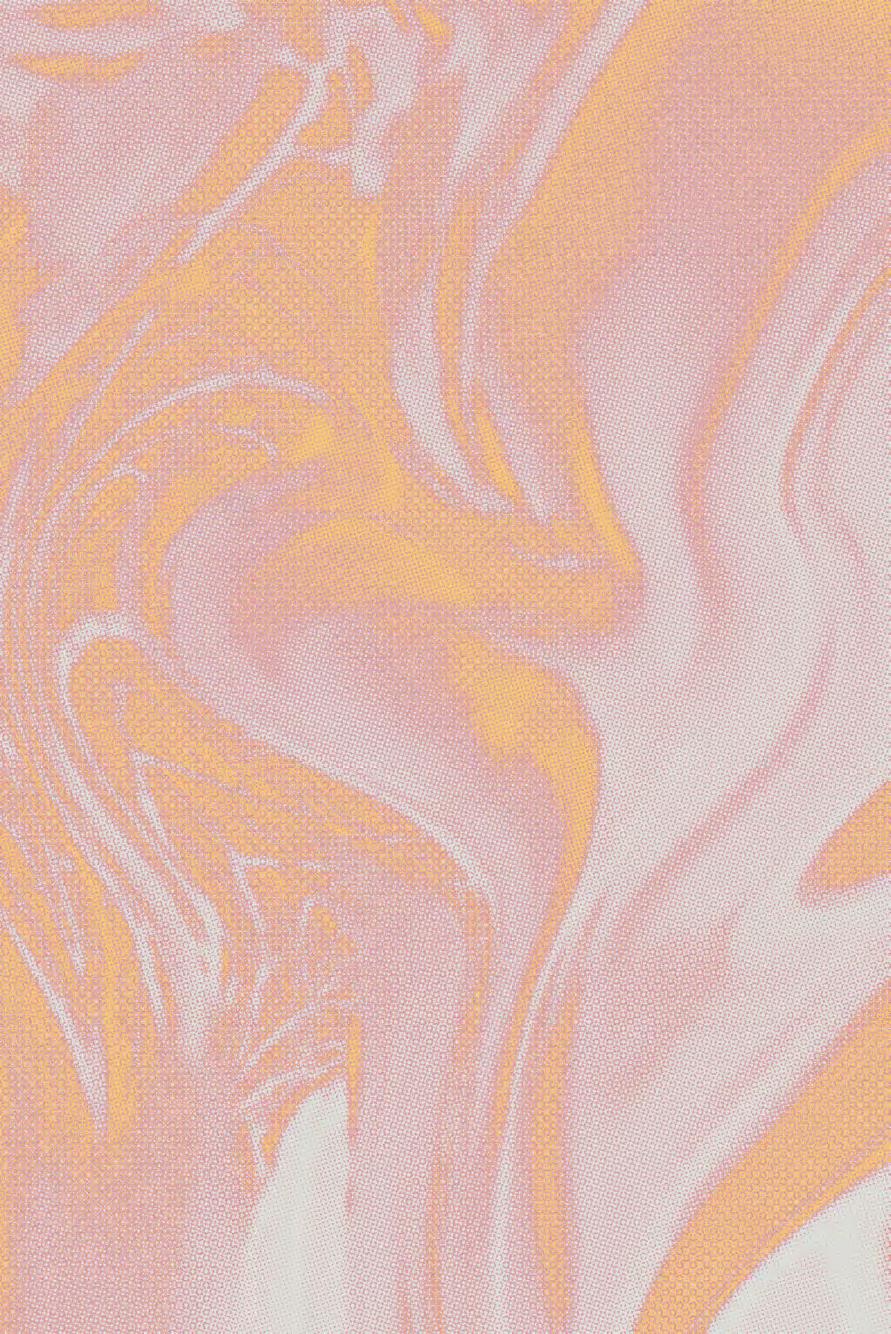
Crystel Parras
Issue 05 c.34
When does a building become a blind spot, and unrecognisable to the public that walk by? This story is about a carpeted building with a mop and bucket in the corner, and a Police raid in the 70s.

Nooked behind Flinders Street Station, right of the historic Milk Dock, and left of the Banana Alley Vaults, is a lonely little blue shop that sits by itself in an odd position across the road from now City Basement Books. The store has shifted across many titles and purposes over the years, first recorded as a bootmaker in the 1930s. MidCity Newsagency was rented from Flinders Street Station in 73’, and it’s permanent underground history lived on until the 2000s.
MidCity was an eccentric hive of deranged oddity, locked behind boarded glass windows. After opening the red door, customers were greeted with a brick wall that caused each one to take an awkward turn and step to enter the building. For fanzine fanatics and bargain hunters alike, a small bin wrapped in green felt was filled to the brim with last year’s calendars, damaged paperbacks, and back issue comics and fanzines now out of date.
The bin was labelled “ODDMENTS” with a blue marker, and was a luck-of-thedraw every day. But that isn’t what the store is notorious for, and it may be assumed by it’s other name, “Liberated X Books”.
Liberated X Books was a small corner hidden behind a veil of plastic curtains that became a hive of adult media illegal in the 1970s.
During the last century, Australia was the one of the most censored countries in the world.
Jasper Riley
LIBERATED BOOK SHOPX
All publications imported into the country were heavily inspected, and most forms of media acceptable for viewing in Europe and the Americas was strictly illegal, reflective of social attitudes of the time.
In the morning of February 9th 1973, the building was raided by Police. The store owner of the time, Mr. Edge, claimed that Police confiscated overseas publications which had been cleared by customs, and even Victorian Premier Rupert Hamer himself two years prior. It’s little to know if there is any truth in that statement, but I digress. In the overall raid, it took four semitrailers and six trucks to load the media in possession of four newsagents across the Melbourne area, with looming threat of more raids to come. Under the one of the harshest restrictive laws of the world, James Baldwin’s Another Country, Aldous Huxley’s Brave New World and other publications across the globe that documented socio-cultural change in the 20th century were censored for their “obscenity”.
In 2022, the big lettering is painted over, and the signage has faded and history is buried. Liberated X Bookshop, MidCity Newsagency was a challenge against what we are told we can read, what we are told we can see. This isn’t an opinion piece, nor a crusade about censorship. Simply the story of a building that is lost to time, and played an important role in the distribution of media in Melbourne.
CURTAIN CALL c.35
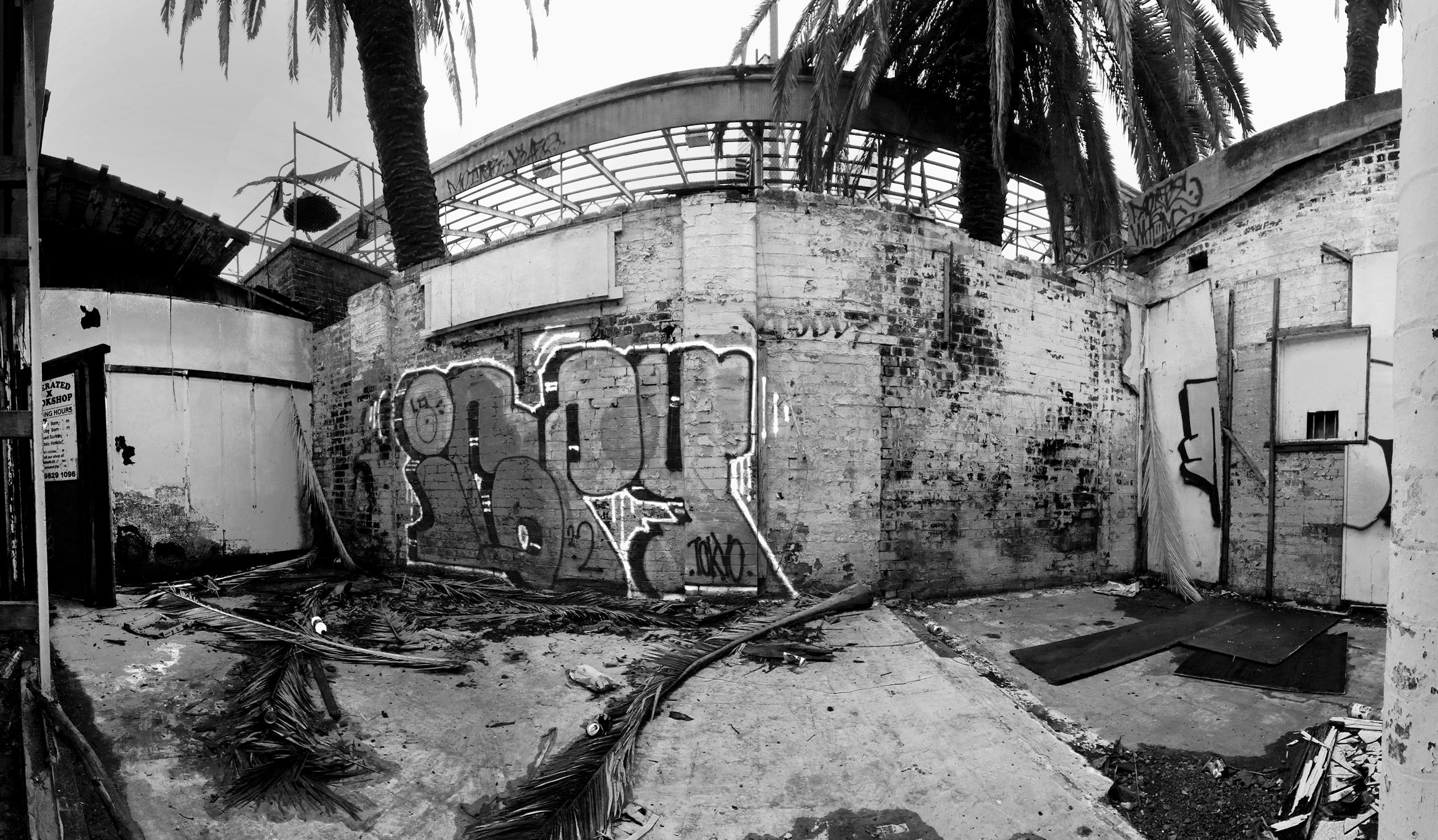

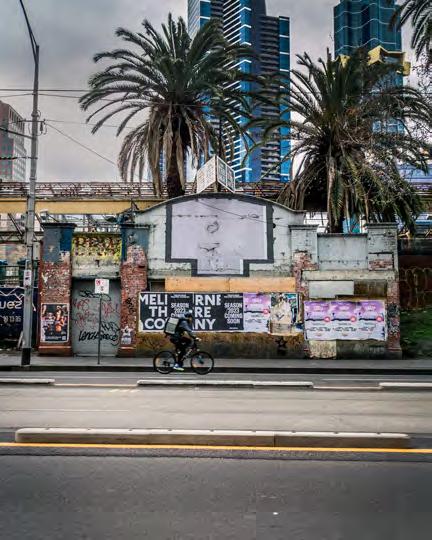 Jasper Riley
Jasper Riley
‘Satu Malaysia’ is what I’d jokingly say if you asked me what Malaysia was like.
I love picnics in Taman Tun Park. feeling monkeys chase me as they try to steal my food makes me giggle. Sitting down by the lake to feed catfish, shrieking with excitement when I see a tortoise in the water. Still so young and naive that I call them turtles, having no clue that there’s a difference. Just existing in the sun and grass is bliss – until I am eventually chased out of the park by the hoard of monkeys hellbent on eating my lunch for me.
Road trips to Kampar are my favourite – the place I call my kampung. I’m constantly looking forward to sitting in the back of a truck for half an hour, driving through acres upon acres of rubber trees, just so I can float down the sungai. Sleeping in hand-built treehouses, enveloped by mosquito nets, watching the array of native insects envelop me and my little sister. If I’m lucky, after countless beetles, flies, and mosquitoes, a Rajah Brooke’s Birdwing butterfly will land. Its bright green colour is almost black in the night, but my excitement is vibrant enough.
Very little in this world makes me happier than late night Mamak trips: two chapati and a Milo Ice Kosong every single time. The sticky floor squeaks under my slippers and the smell of curry overwhelms my nostrils. Eating with my dahlcovered hands and washing them in the faucet above the roadside drain.
I’m so used to these sights, smells, and sounds that I simply cannot fathom how unfamiliar it may be to another.
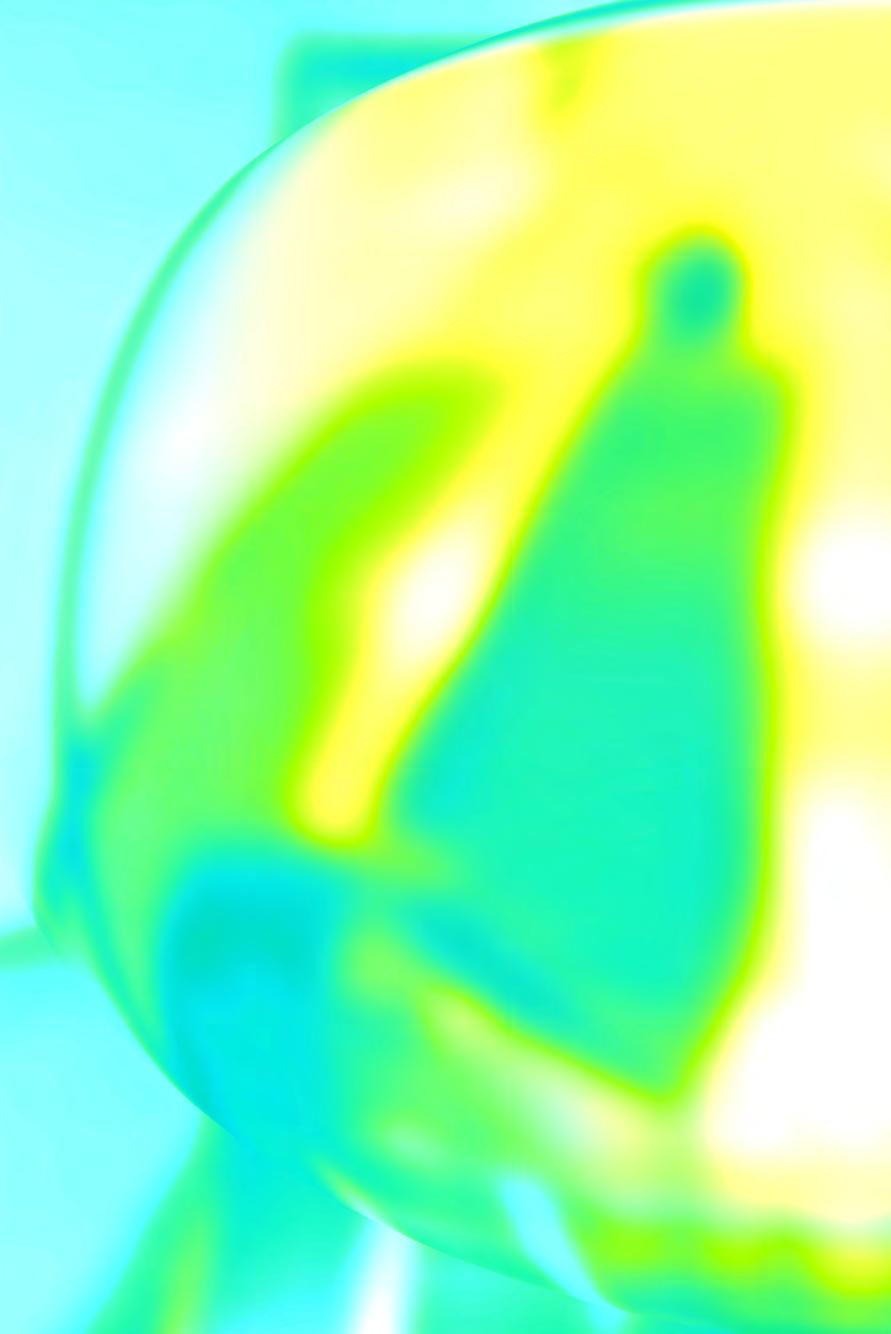
I trust my government to take care of me when I am in need, locked in my house, alone with my sister, because my mother has left to the city. I can’t fully understand what she’s set out to do, but it’s obvious with how hush-hush my aunties are, that it’s not good. I want to watch TV. The news channel is playing footage of a sea of yellow shirts, canisters of tear gas bursting left and right. Sitting in the comfort of my own home, frozen with fear that my mother will not make it home to me and my baby sister today.
Riot gear and water cannons overwhelm protesters while I scream and cry and beg for her to just come home to me.
CURTAIN CALL c.37
House parties in the city are such a fun part of growing up. Locked in a closet with my same-sex lover as the police sweep the house, persisting until the hosts give them what they want. Money or gay people. We all came here to have a good time, to party, mingle with friends. They press as we all pool our remaining cash, frozen in fear, silently begging them to leave. Hiding transgender and gay people under blankets, in closets, behind curtains, packed in like sardines so we can live to see another day. This is not the first time it’s happened, and it will not be the last.
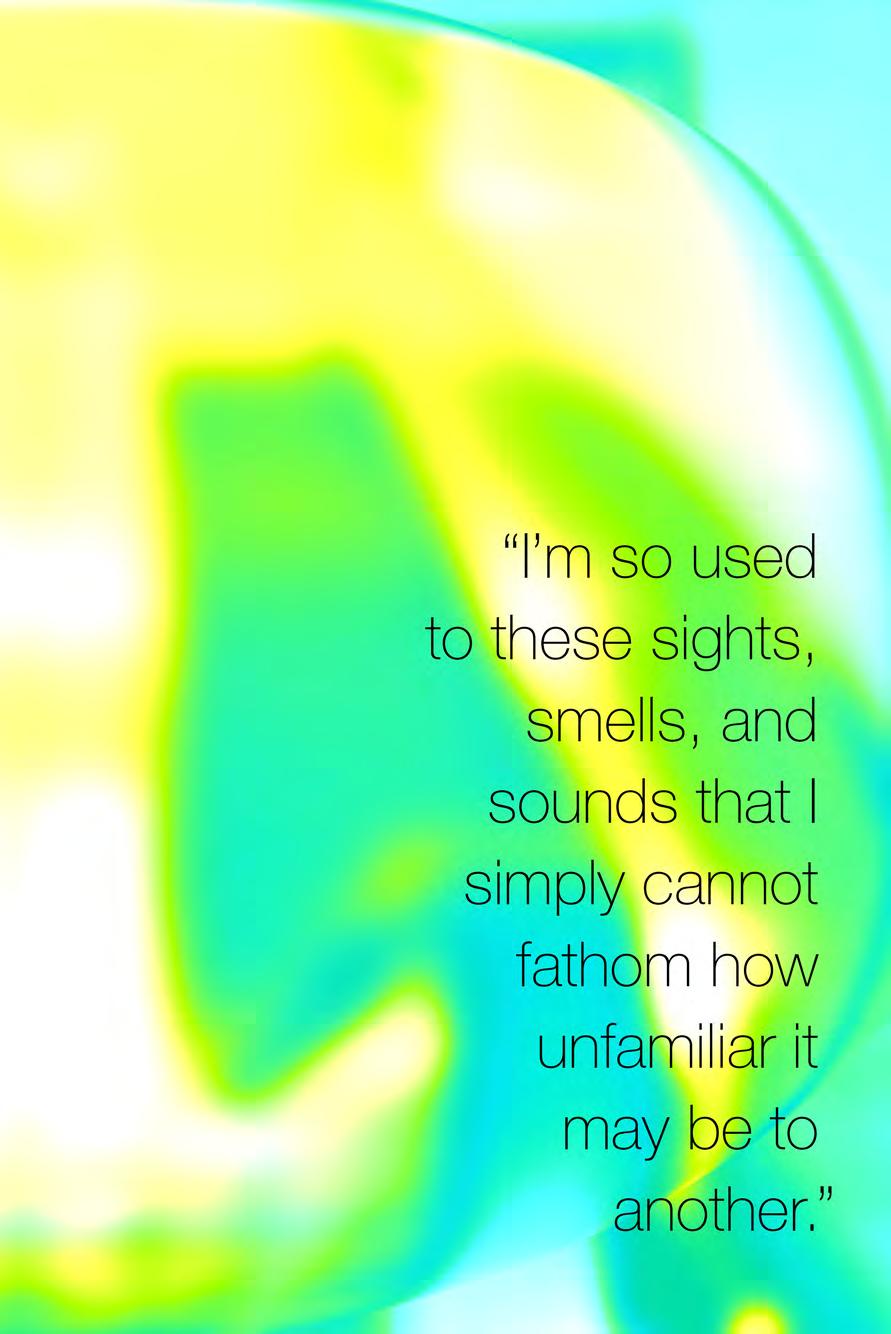
Floods have overrun my town again. I see people gathering the few belongings they can hold, bringing their children and pets to safety. Those in power have not warned us, helped us, provided any shelter or safety. My parents have gone out on rafts to the worst affected areas, to save innocent people before they drown. We are reminded every day that we must take care of our own, or nobody will.
Kita Jaga Kita
Gaia Choo Yeok Boon
Issue 05 c.38

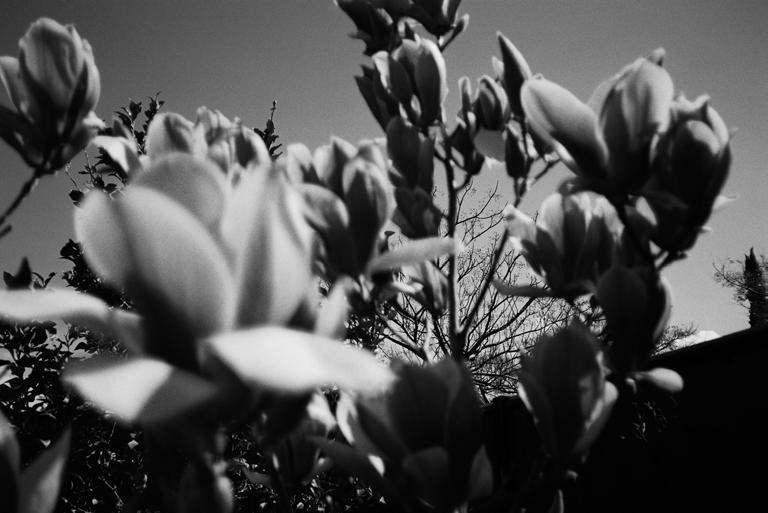

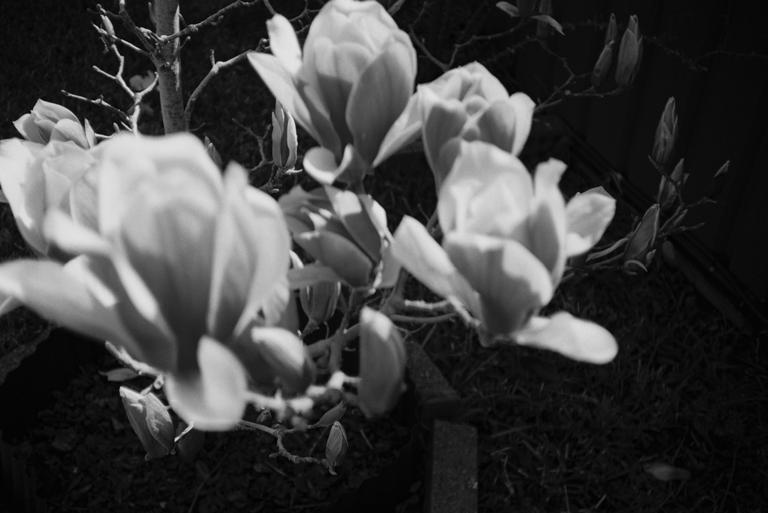 Beatrice Madamba
Beatrice Madamba
LET THEM FALL


They crawl out of crevices in the dark of night. They reach out in the silence, clawing at my mind. Undoing my defences, feeding on my strength. Trying to break me and wreck me, cracks in my chest.
Then comes the loneliness. Of my existence, of my life. My own choices that take me, further and further from my mind. The acceptance, that fate, could find no one, to complete my half.
First come the memories. Of my mistakes and my defeats. Of the wrongs I have done, of the violations and harm. They climb out of cracks that crack even further. They rip me in places that rip even harder.
come. Then comes the horror of losing my way home. What am I doing? Am I doing it right? Where am I going? Am I even going right? The questions they circle, and they circle some more. They leave me untethered, exhausted to the
Next comes the haunting. Of my ghosts and my flaws. I question and requestion. My intentions, my faults. Who am I? What am I? Am I worthy of my life, am I worthy of my cause? They hound me, they frighten, they spiral and they sprawl.
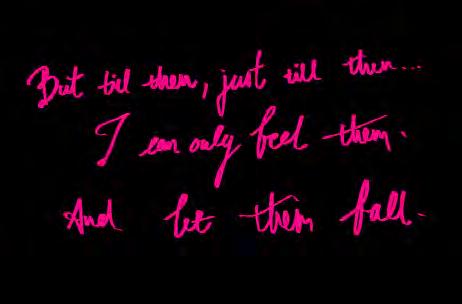



thoughts. And with every drop that falls, my visitors with them fall. I have felt them, acknowledged them, let them go. They are stronger than me, harder than me, but I have survived them all. Tomorrow, another day, they


Jai Mudgerikar
CURTAIN CALL c.41
Might as Well
Loaded words and laboured breaths Running after Heaving chest Against the end of time, the end of doubt
Old man is a stealer, of one’s certainty
Could he not really stretch, ‘cause seemingly Would there be anyone else That I’m thinning myself out for?
For twisted mind and scattered being Wanting to crawl under my tongue, imploring Whether there be a way out?
Toss and turns And final stretch
The end is here The only way, is through
Cast the light
Behind sun-bleached walls, Scorched hair and under the intimacy of one’s breath
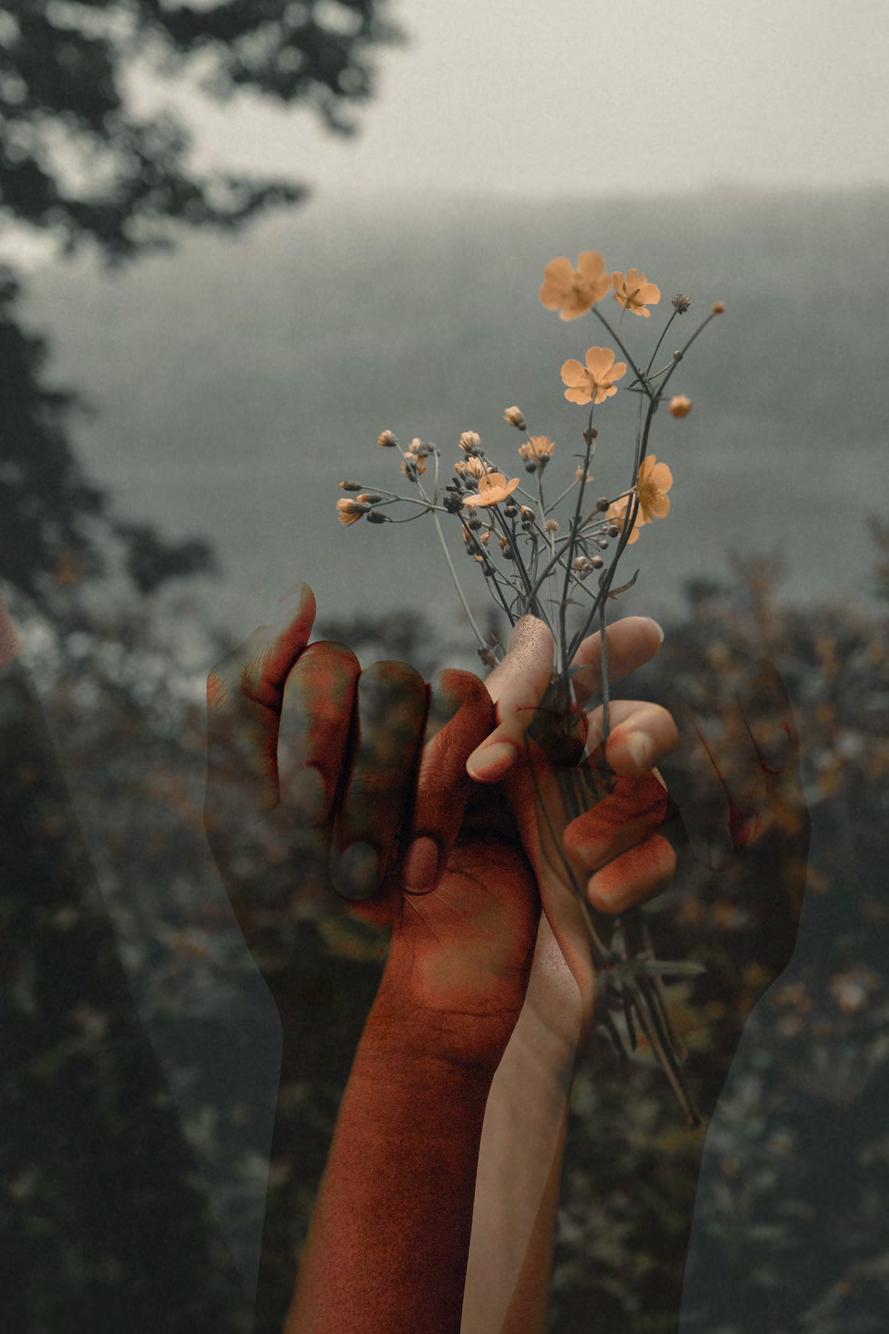
Sunken feet and sand-filled shoes
Tides pulled my feet towards the pith Of gravity
The end of doubt leaning against the shore, bathing in salt air and coconutscented lotion
Far and wide
There is nothing to be found behind old time so Trust falls, my friend!
Anonymous background image by Charlie Borracci
Issue 05 c.42
Her hair is short and choppy. A kind of homemade haircut only a mother could give. She is wearing the same rainbow print leggings I wore every day when I was her age. They are ugly and tacky, something only a kid could like. There’s something endearing in that, in that childhood gaze that clutches onto anything that is bright and fluorescent. The tights are oddly paired with a hand-me-down football jersey, like the one my mum gave me when my brother was too big to wear it. It falls awkwardly off her small figure.
Her knee is propped up and bleeding. As she fixates on the blood oozing from her kneecap, tears fall down her cheeks.
She is helpless.
I rumble through the front pockets of my suitcase and find a first aid-kit. As I kneel down in front of her, I’m watchful not to make any sudden movement. I take her knee into my lap and inspect it.
“Can I help you,” I ask. Waiting for her prudent nod before I pull out a disinfectant wipe and a Band-Aid. I peer at her big brown eyes salted with tears and notice something familiar in them. How they sparkle when she cries. They’re like mine.
“This is going to sting. Take deep breaths with me, yeah?” I say. She follows my breathing as I wipe the disinfectant over her knee. She winces but exhales heavily when it’s over. A soft smile appearing on her face.
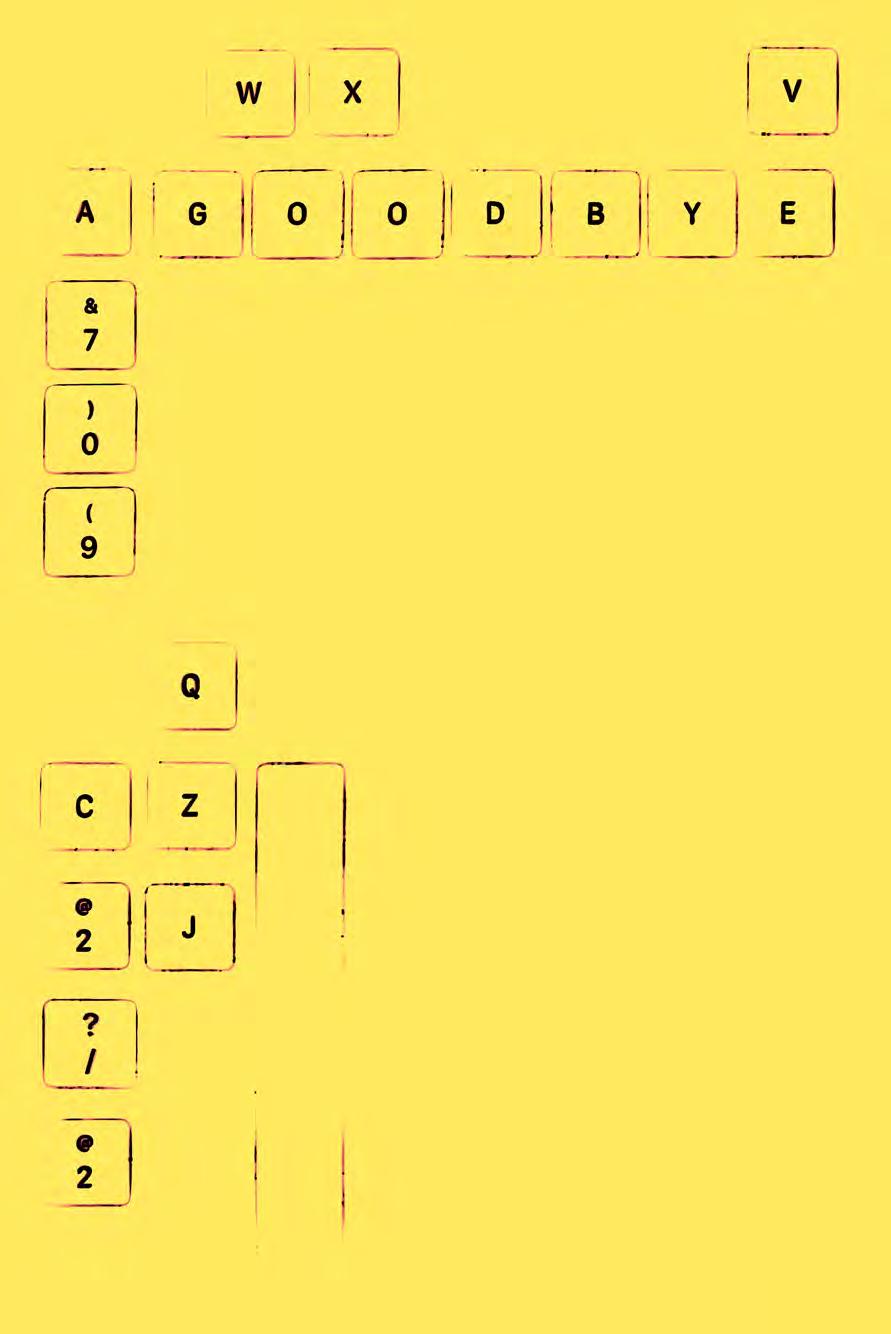
709 is written in big black lettering on a faded yellow door. It lives at the end of a hallway in an apartment building complex and I hold the key. I glance back down the hallway just to catch a glimpse of a young girl sitting there.
CURTAIN CALL c.43
“See, you took it like a champ,” I say, holding out my hand. She high-fives it and lets out a childish giggle. It’s the sort of laugh you want to bottle up. So unapologetic. A laugh before you realise people can have ‘ugly laughs’.
“Now, for the Band-Aid,” I say, unwrapping it and pressing it gently on her knee.
“And a kiss,” I lean down and leave a kiss on her knee like my mum used to do when I scraped mine.
“All fixed!” I say. That smile does not leave her face as she rubs her knee.
“Is it time to say goodbye?” she asks. I peer over my shoulder to the apartment door and then back at her. Her head is tilted like a dog who thinks I have a treat in my hand.
“Yes, it’s time to say goodbye.”
She opens her arms up and I shuffle closer. Enveloping her in my embrace.
“I’m sorry you’re hurt. But it gets better, you know,” I say into her ear. She nods into my shoulder.
“When?” she says. The words die on my tongue because I’m not sure I have found the answer yet.
Scuri
“Every day the sunrises, it gets a bit brighter,” I say, wiping her tear-stained cheeks. She nods her head like she understands me, even if I feel as ignorant as a child. Then she disintegrates in my grasp. I am all alone once again.
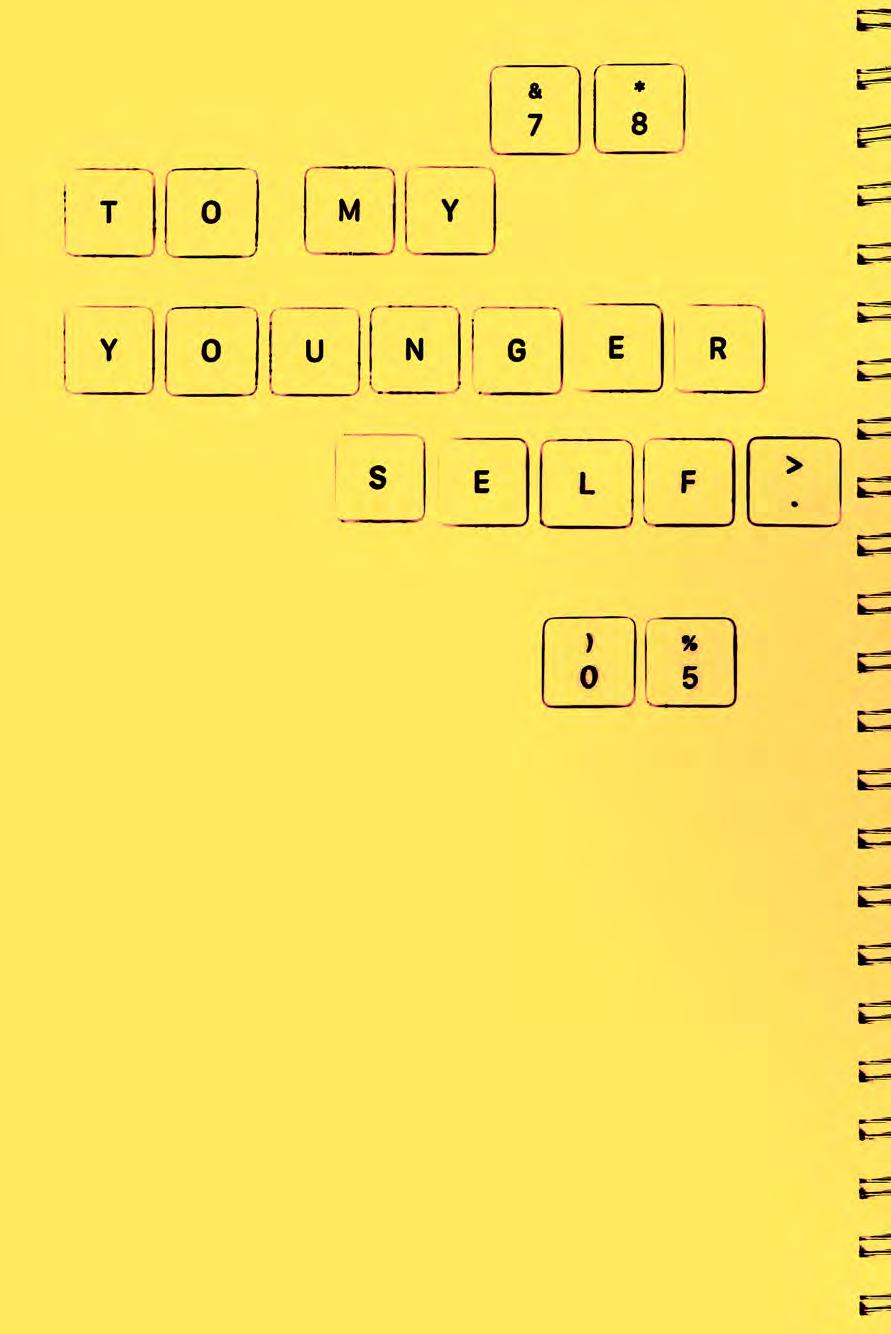
Lara
So, I walk back to the door. My door.
Learning to like the sound my feet make as I walk away from a life that fits like a hand-me-down from my older brother.
Issue 05 c.44
CATALYST
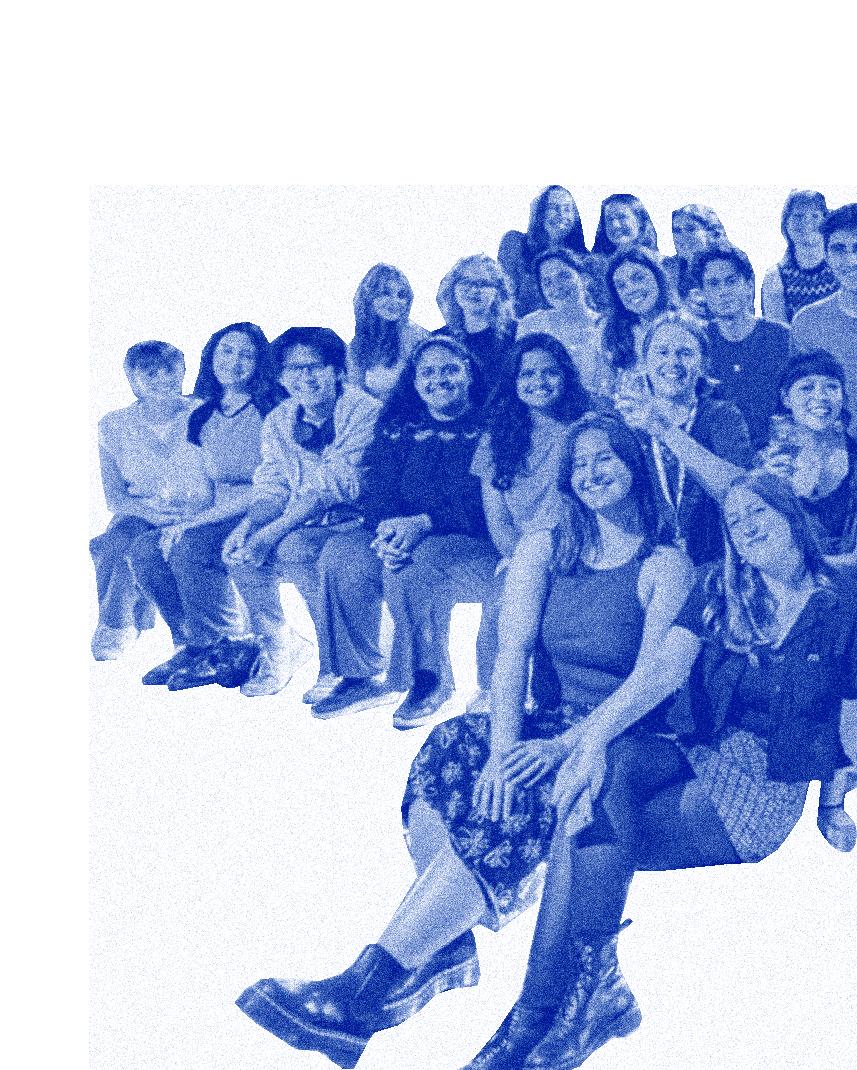
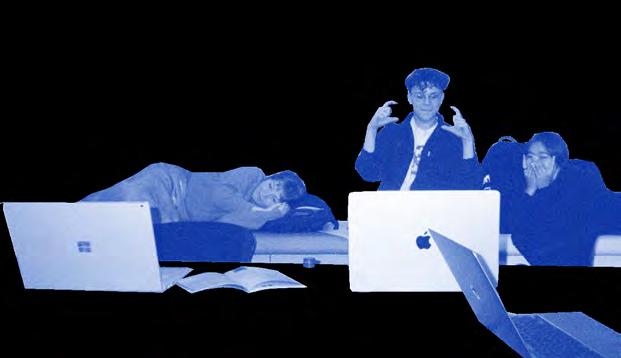
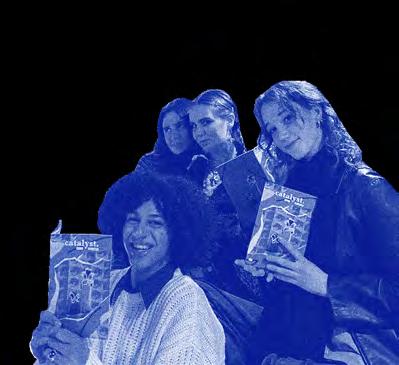
Catalyst 2022 CURTAIN CALL c.45
CATALYST


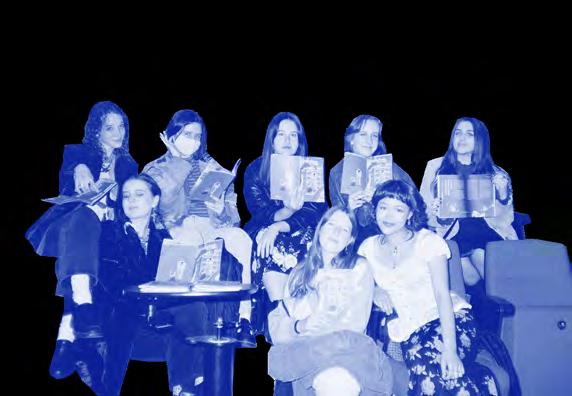
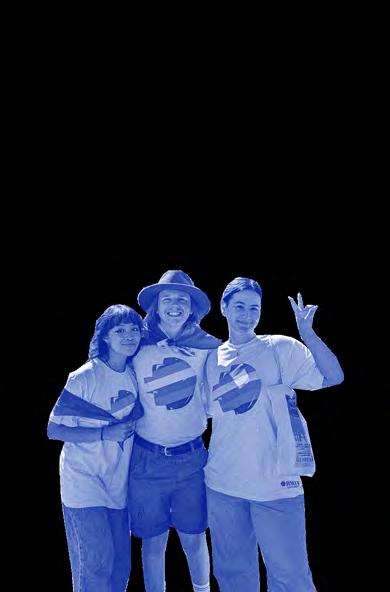
2022 signage page Issue 05 c.46
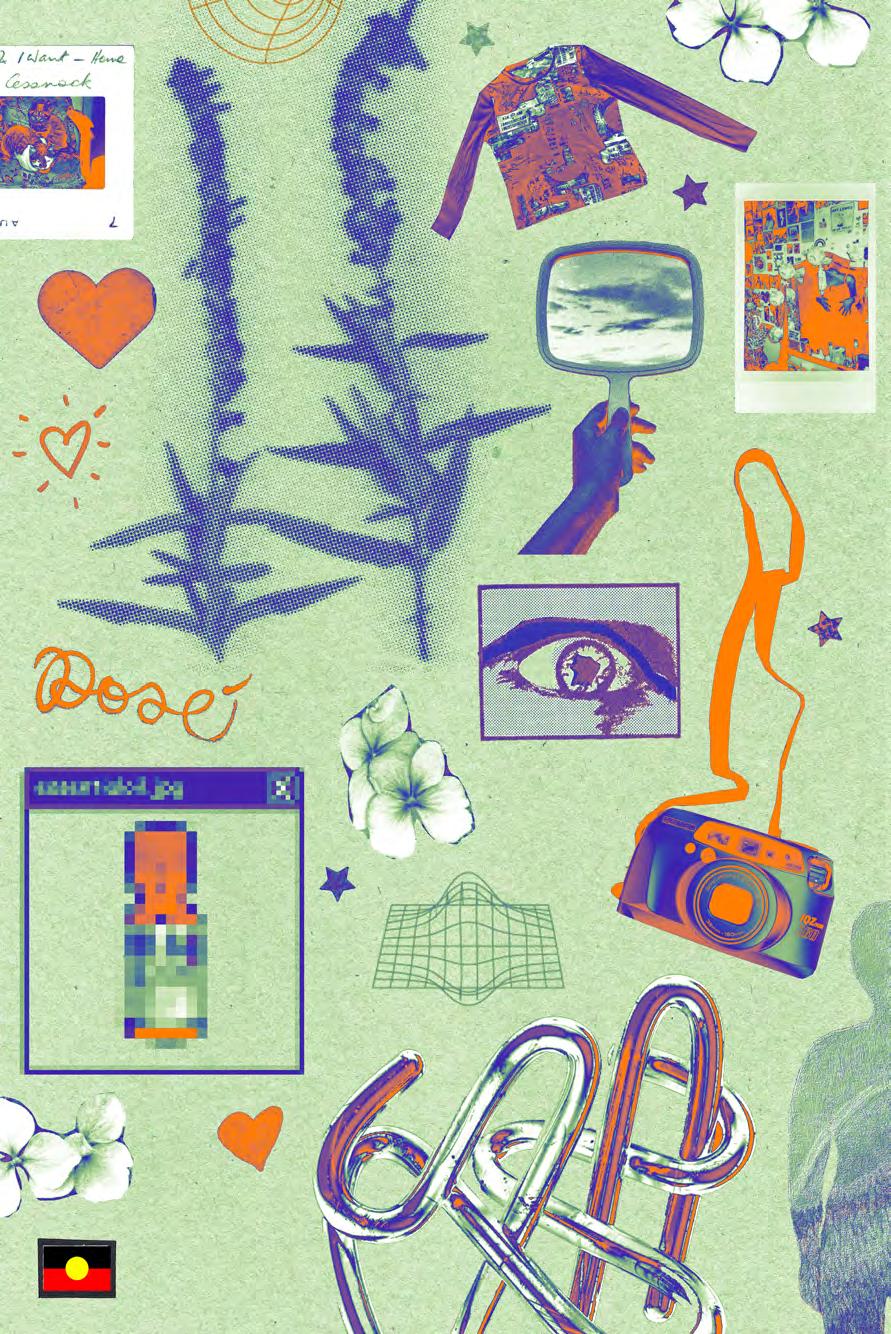
PUBLISHED ON ABORIGINAL LAND










































 Diana
Diana
 Luka D’Cruz
Luka D’Cruz



 Lauren Facci
Lauren Facci

























 The Capitol is offering Catalyst readers a discount
The Capitol is offering Catalyst readers a discount



 Alice Manderson
Alice Manderson


 Tessa Remsu
Tessa Remsu



 Sabrina Caires
Sabrina Caires
 Charlie Borracci
Julianna Perkosz
Charlie Borracci
Julianna Perkosz

 Lydia Schofield
Lydia Schofield




 Beatrice Madamba
Beatrice Madamba
 Nishtha Sharma
Nishtha Sharma




 Chay Newman
background image by Charlie Borracci
Chay Newman
background image by Charlie Borracci








 Jasper Riley
Jasper Riley





 Beatrice Madamba
Beatrice Madamba


















